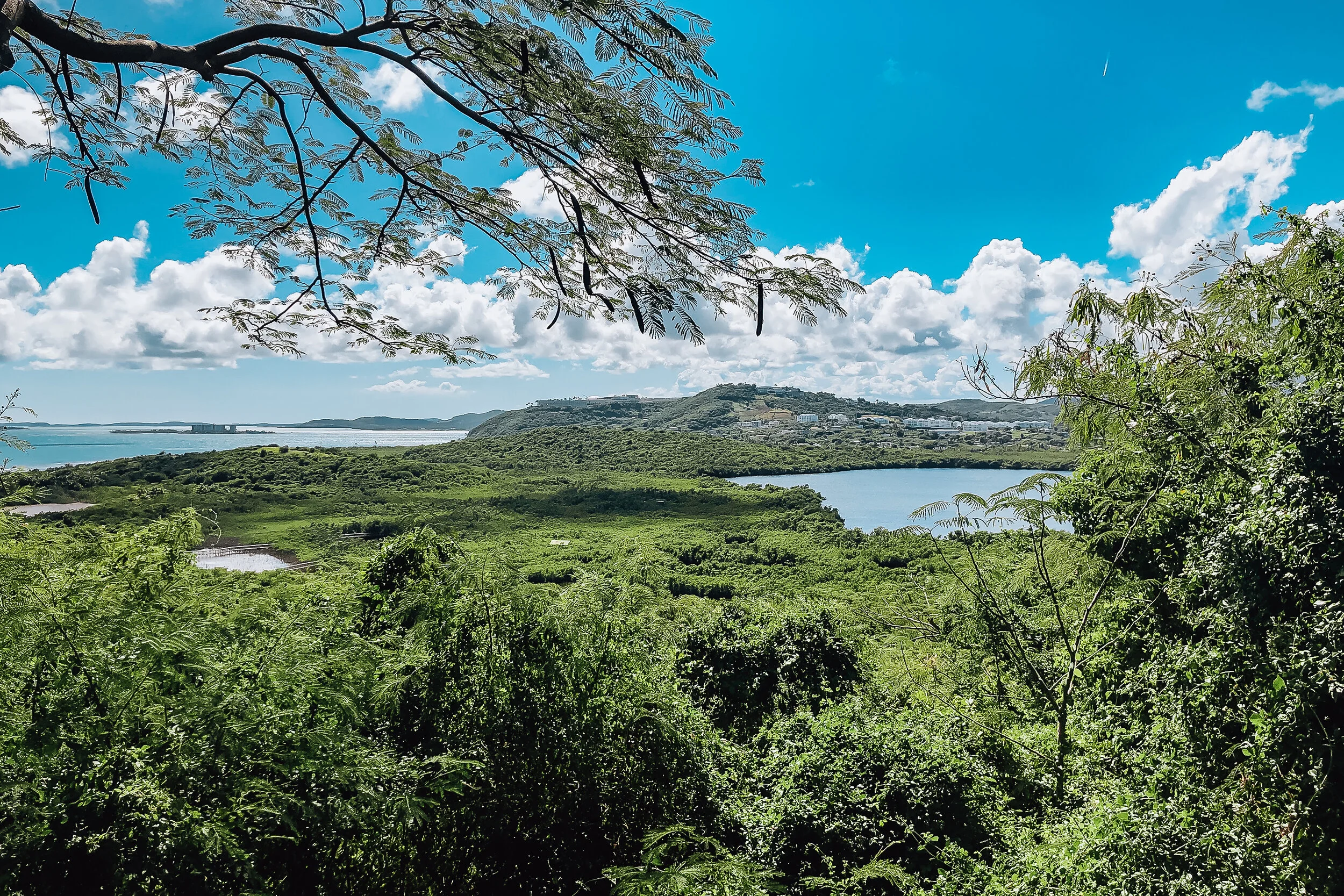Eastern Puerto Rico
La Isla del Encanto
Puerto Rico is known as La Isla del Encanto, which translates to The Island of Enchantment. The island is home to some of the most natural landscapes and wildlife; including Caribbean beaches, bioluminescent bays, rainforests and waterfalls. Going East from San Juan, we’ve hiked to the peak of El Yunque, kayaked though mangrove forests in Las Croabas and snorkeled with sea turtles in Culebra.


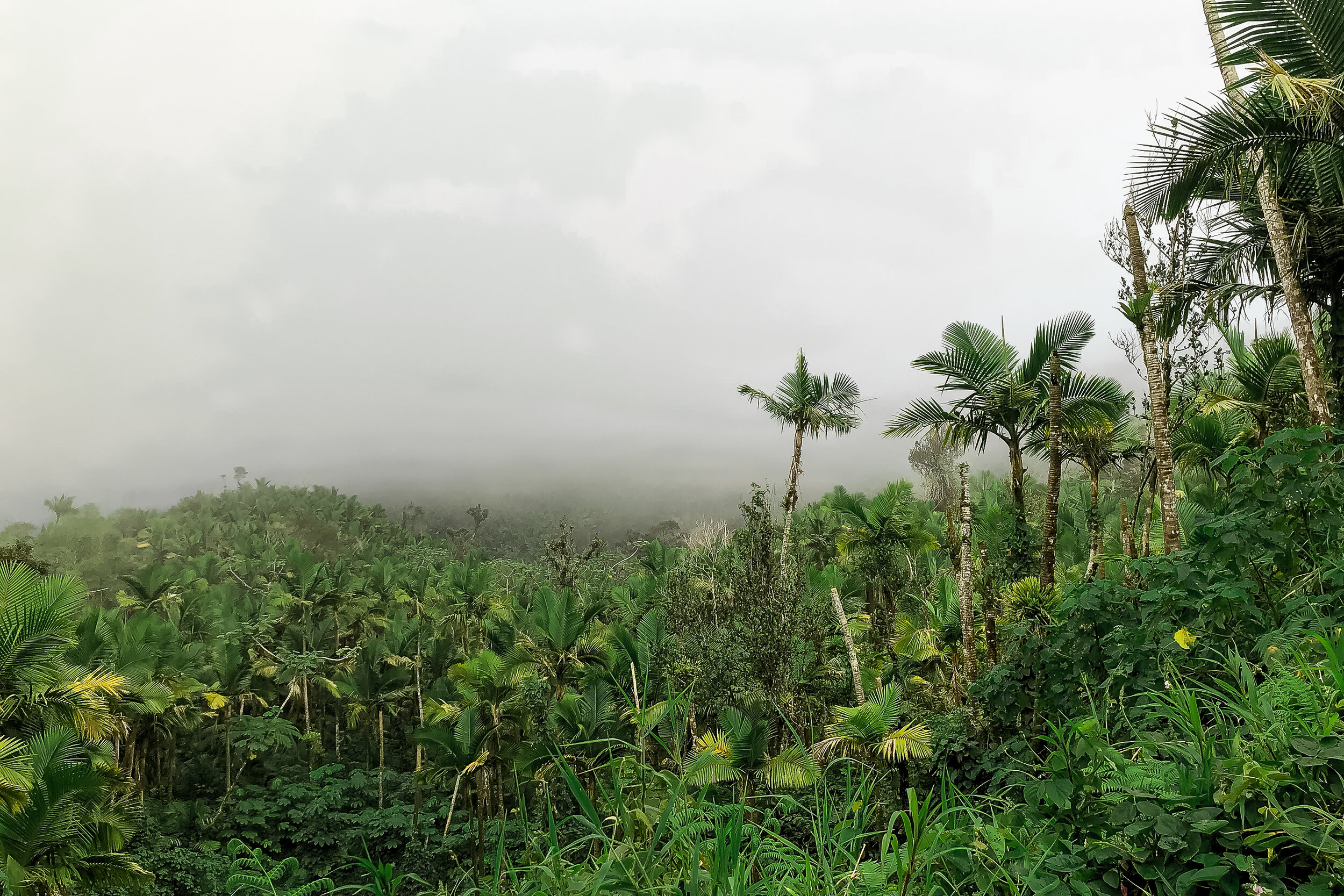
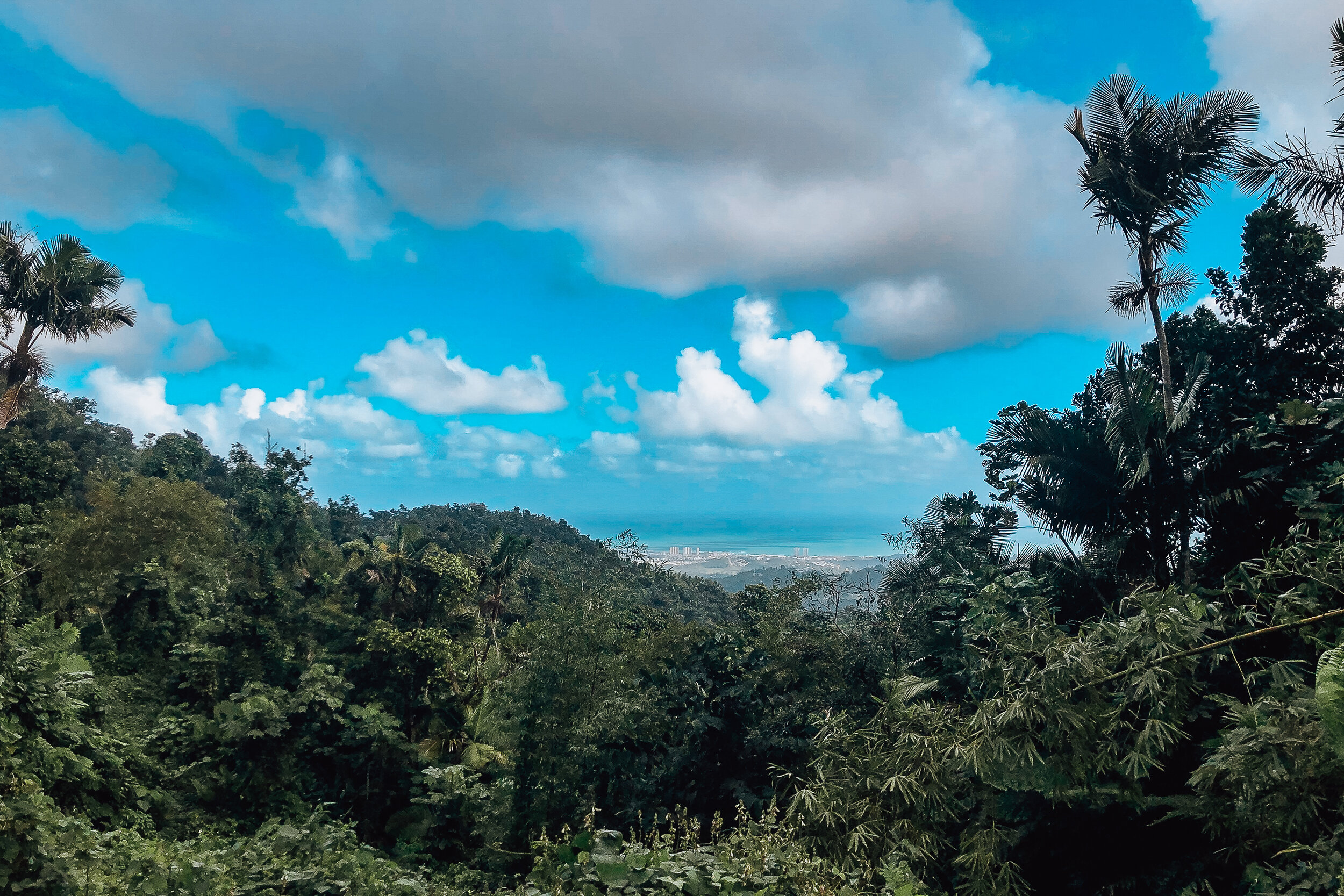
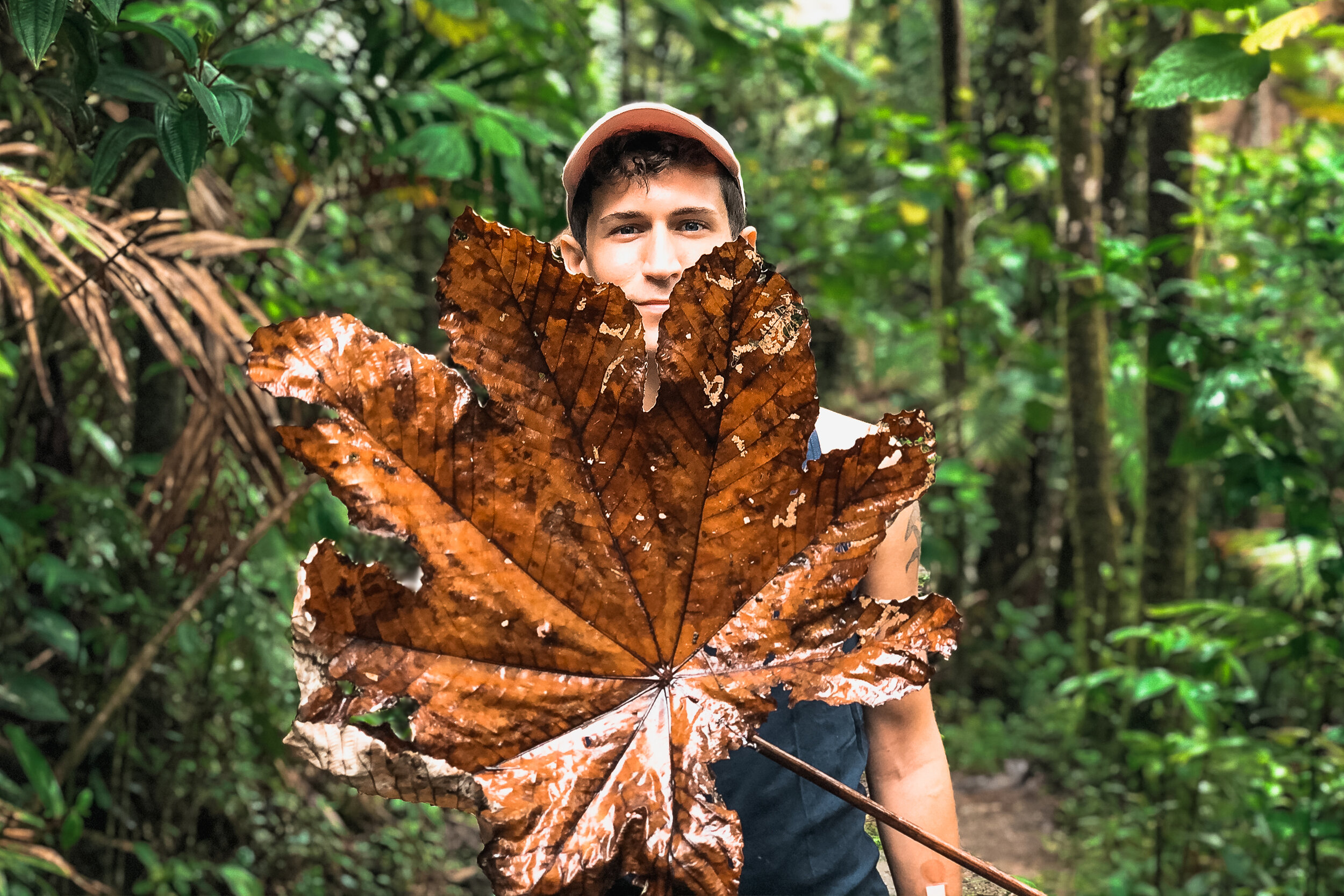
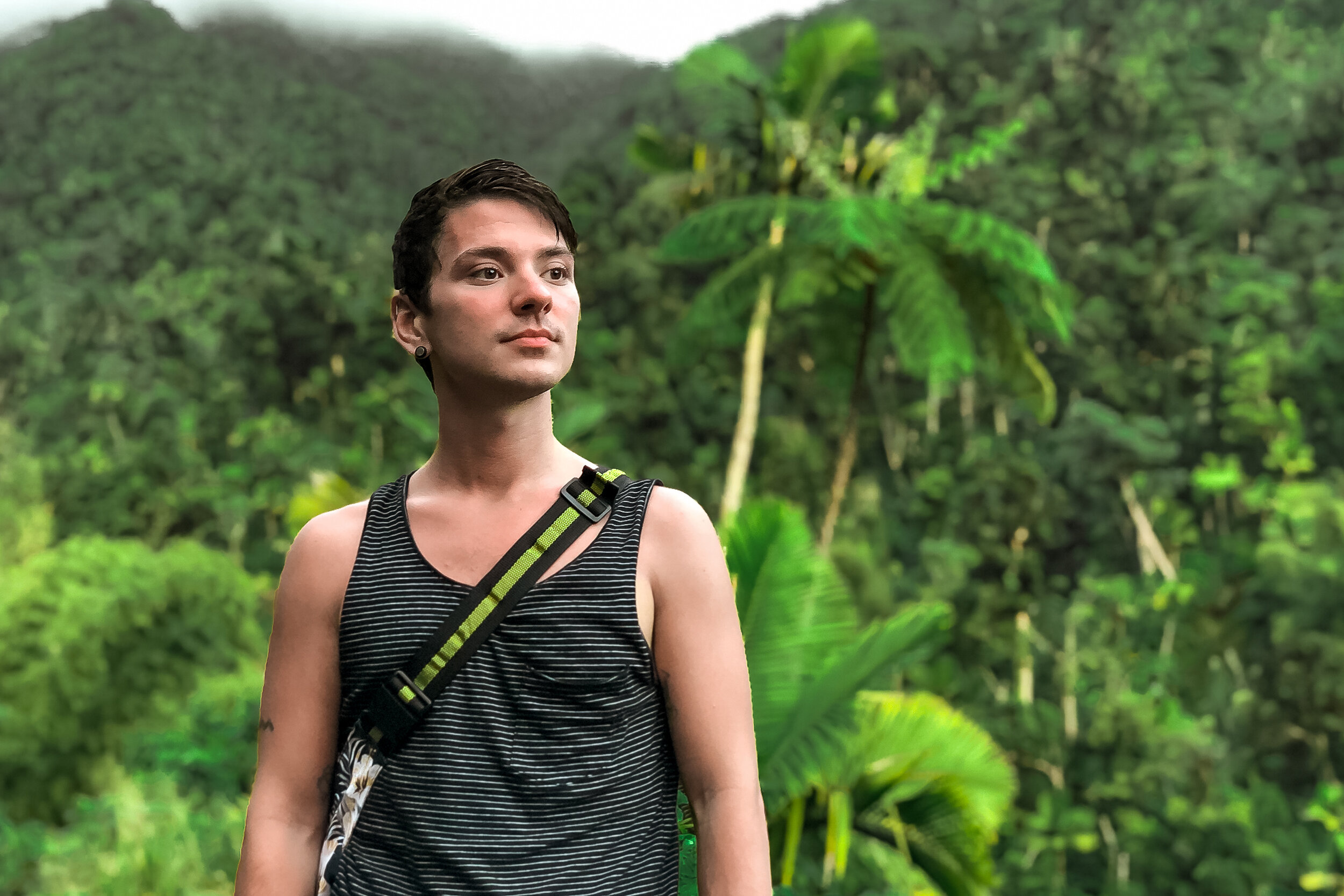
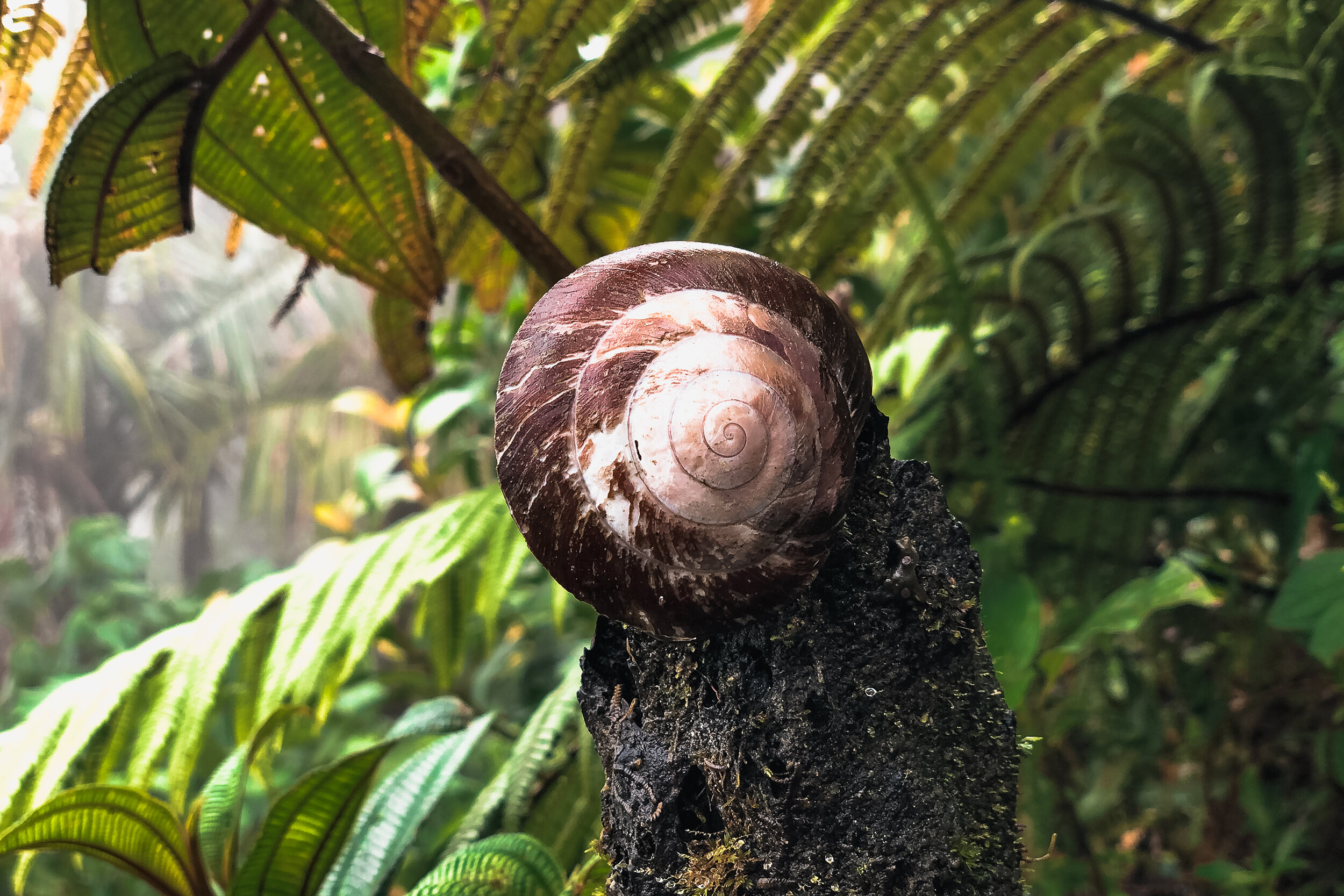
El Yunque National Forest
El Yunque is Puerto Rico’s only rainforest. The landscape is full of lush tropical vegetation, waterfalls with natural pools, hiking trails, lookout towers, tree snails and frogs. Here are a list of sights and trails in consecutive order past El Portal Visitor Center.
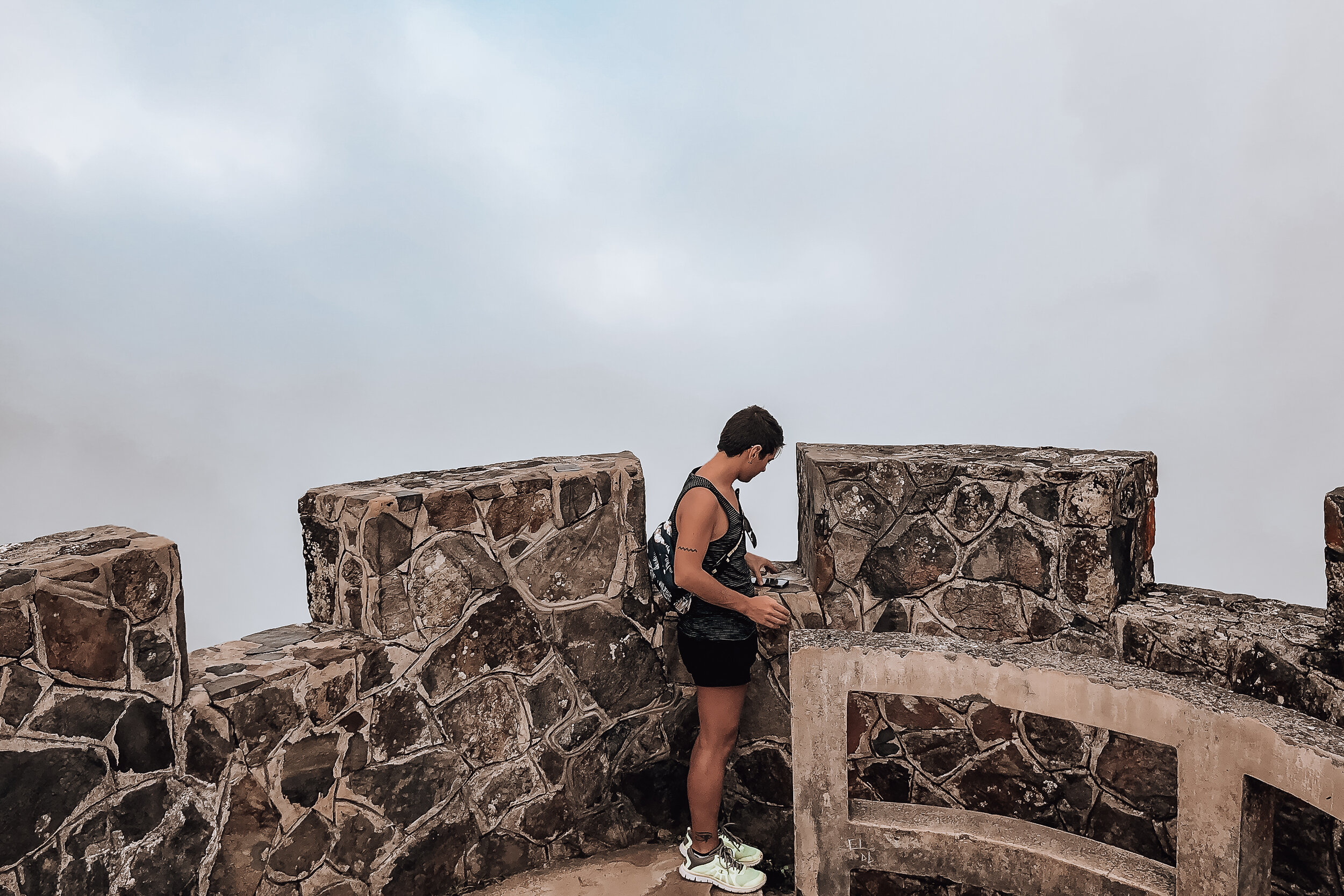
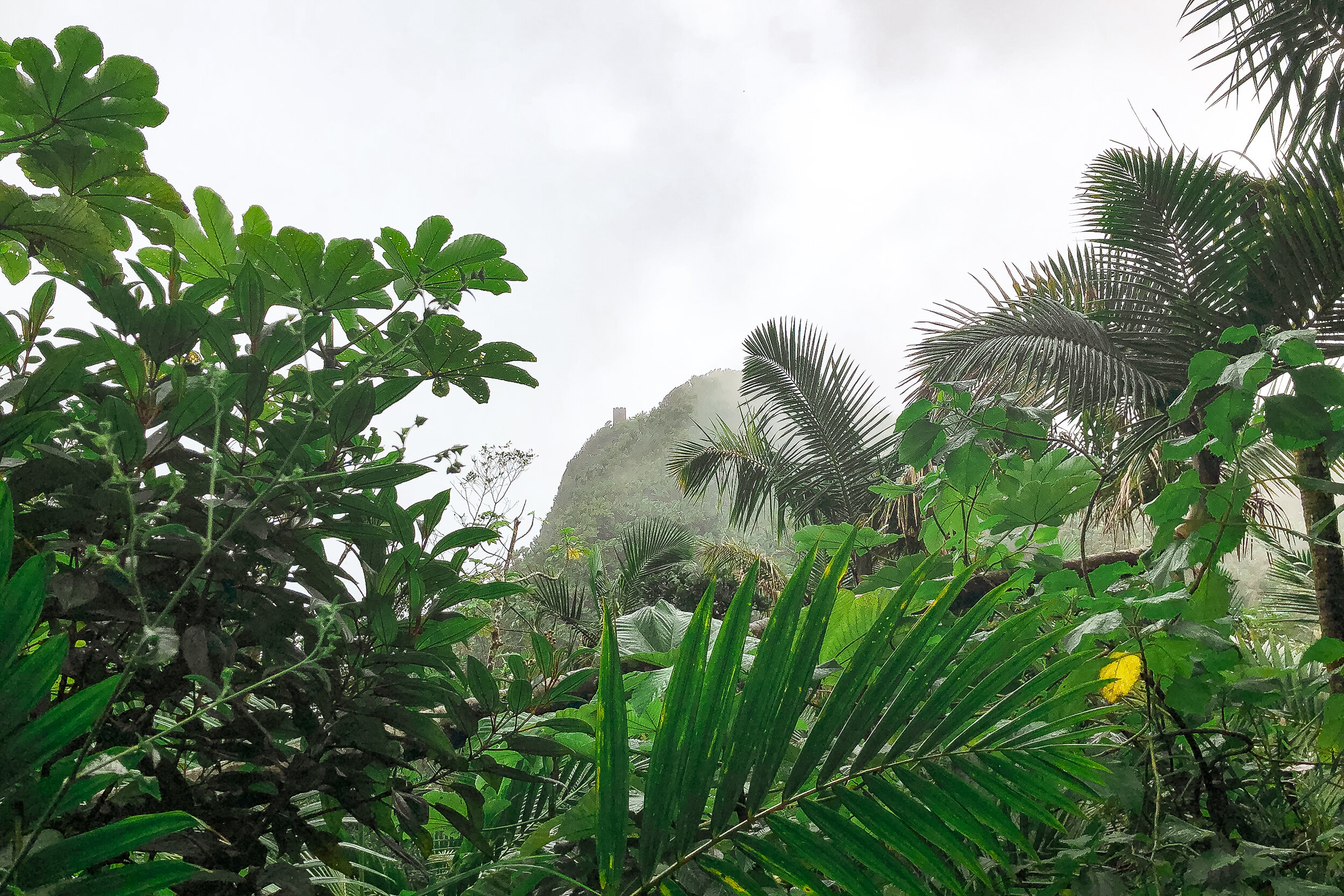





La Coca Waterfall. An 85ft roadside waterfall shortly after entering El Yunque.
Yokahú Tower. An observation tower less than 1km past La Coca Waterfall.
Juan Diego Falls. Down the road from Yokahú Tower is series of waterfalls with natural pools for swimming. The falls are reachable via a short trail from the road.
Sierra Palm Picnic Area. The only restaurant in El Yunque with great lunch options and refreshing drinks.
Mt Britton Trail. A thin paved and stone laid trail though the rainforest leading to Torre Mt Britton. It takes about 45 minutes from the trailhead to reach the peak.
Torre Mt Britton. An observation tower at El Yunque’s second highest peak with cool breezes, rolling clouds and sweeping views of the Caribbean and Atlantic coasts.
Mt Britton Spur Trail. Connects the Mt Britton Trail to El Yunque Trail just before the trail to Torre Mt Britton.
El Yunque Trail. The rainforest’s longest trail leading to El Yunque’s highest peak.
El Yunque Peak. Often within the clouds, the peak is surrounded by a forest of foliage with stunted growth due to the heavy rain, wind and erosion. There is also an abandoned medical building and series of antenna.
Degree 18 Juice. Come here for a healthy pick-me-up after hiking in El Yunque. Located in the town of Palmer at the base of the mountain, they offer smoothies, vegan burgers and hammocks to relax in.
Good to Knows:
Bring water and snacks.
Wear hiking shoes with good treads, the rocks are slippery.
The temperature gets colder the higher in altitude you hike.
Expect it to rain, bring a raincoat or umbrella and change of clothes.
Rent a car. There are no Ubers or Taxis allowed into the park. The drive is 1 hour from San Juan.
Arrive early, parking spots fill up quickly. Rangers will ticket you for parking in undesignated spots.
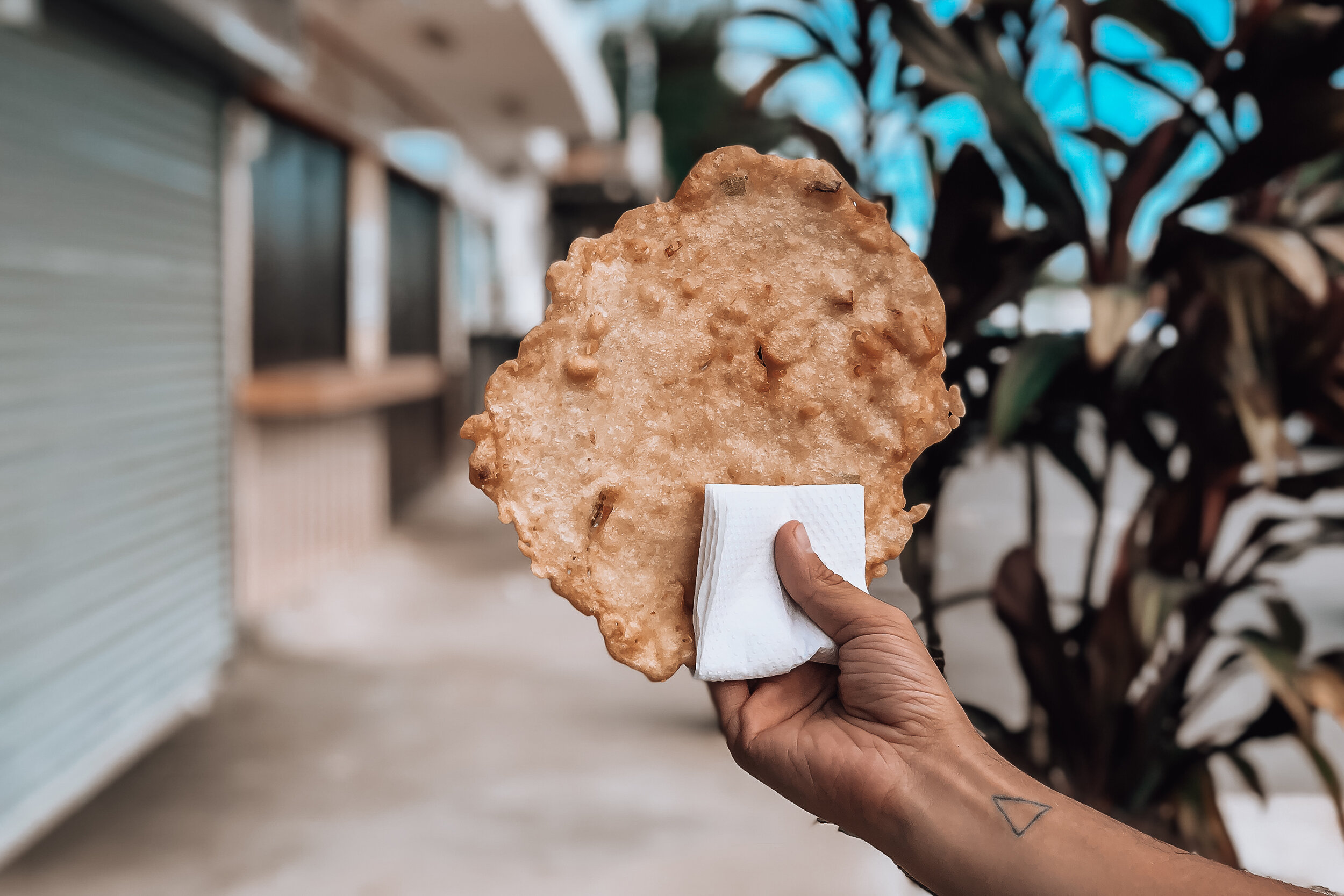
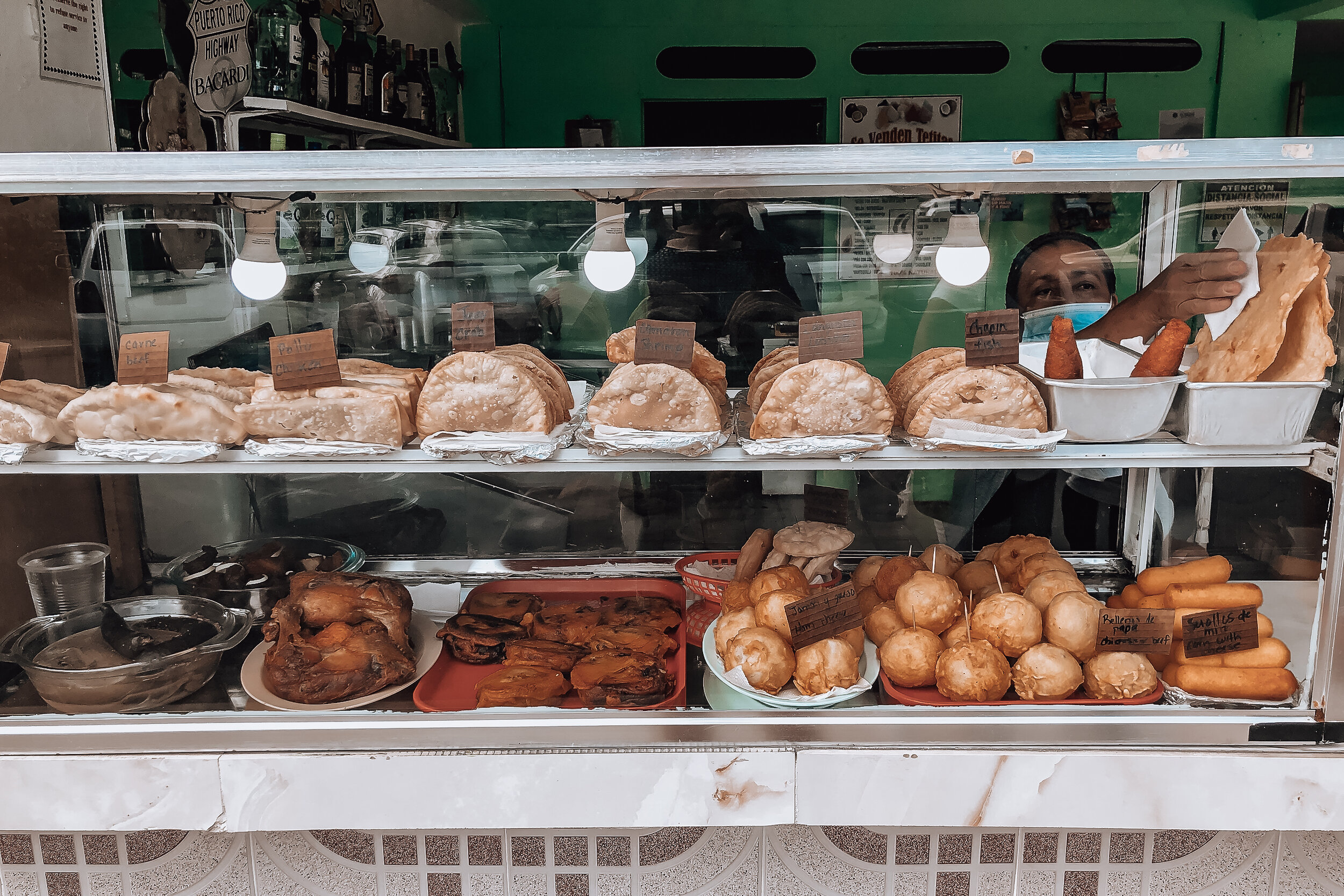

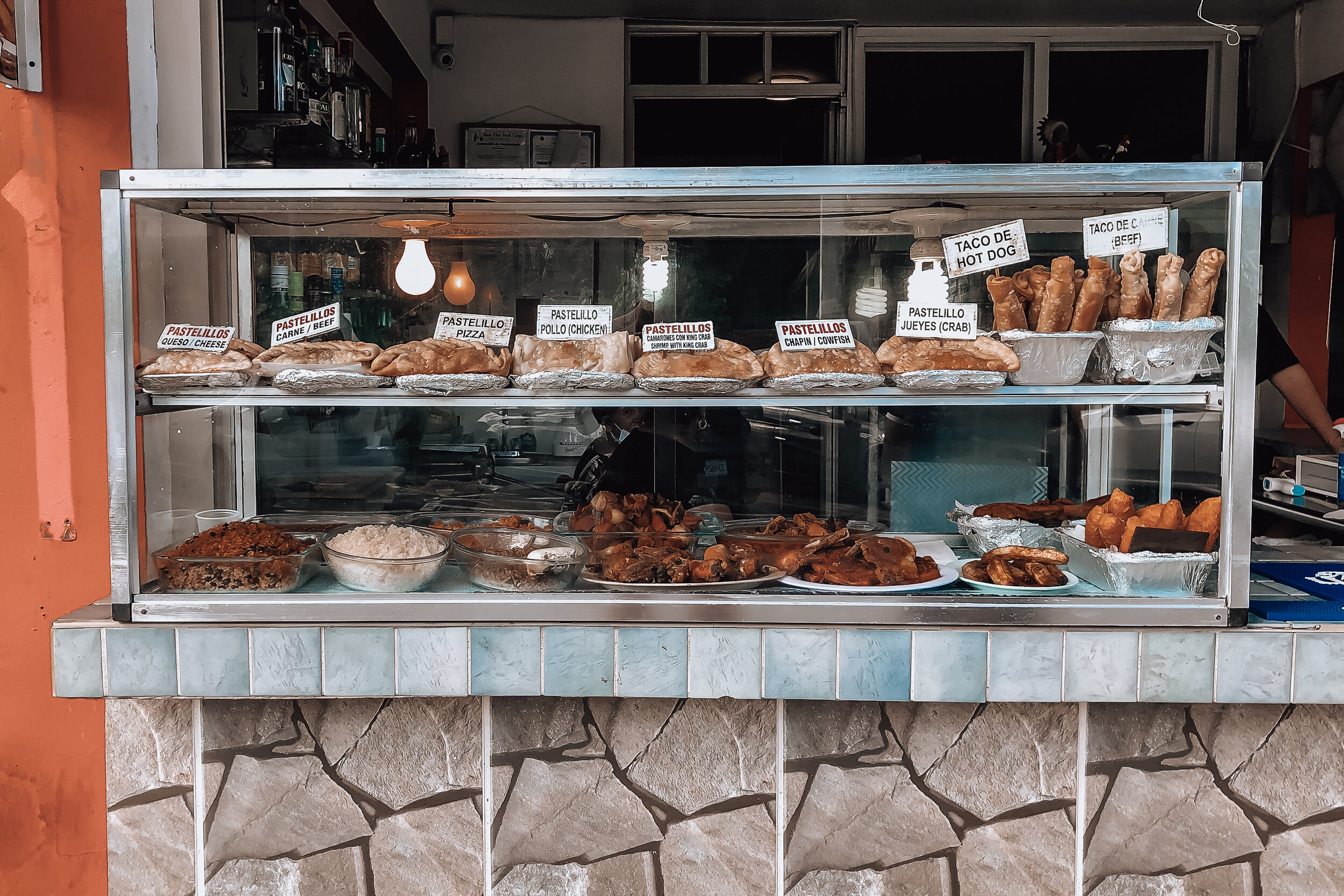
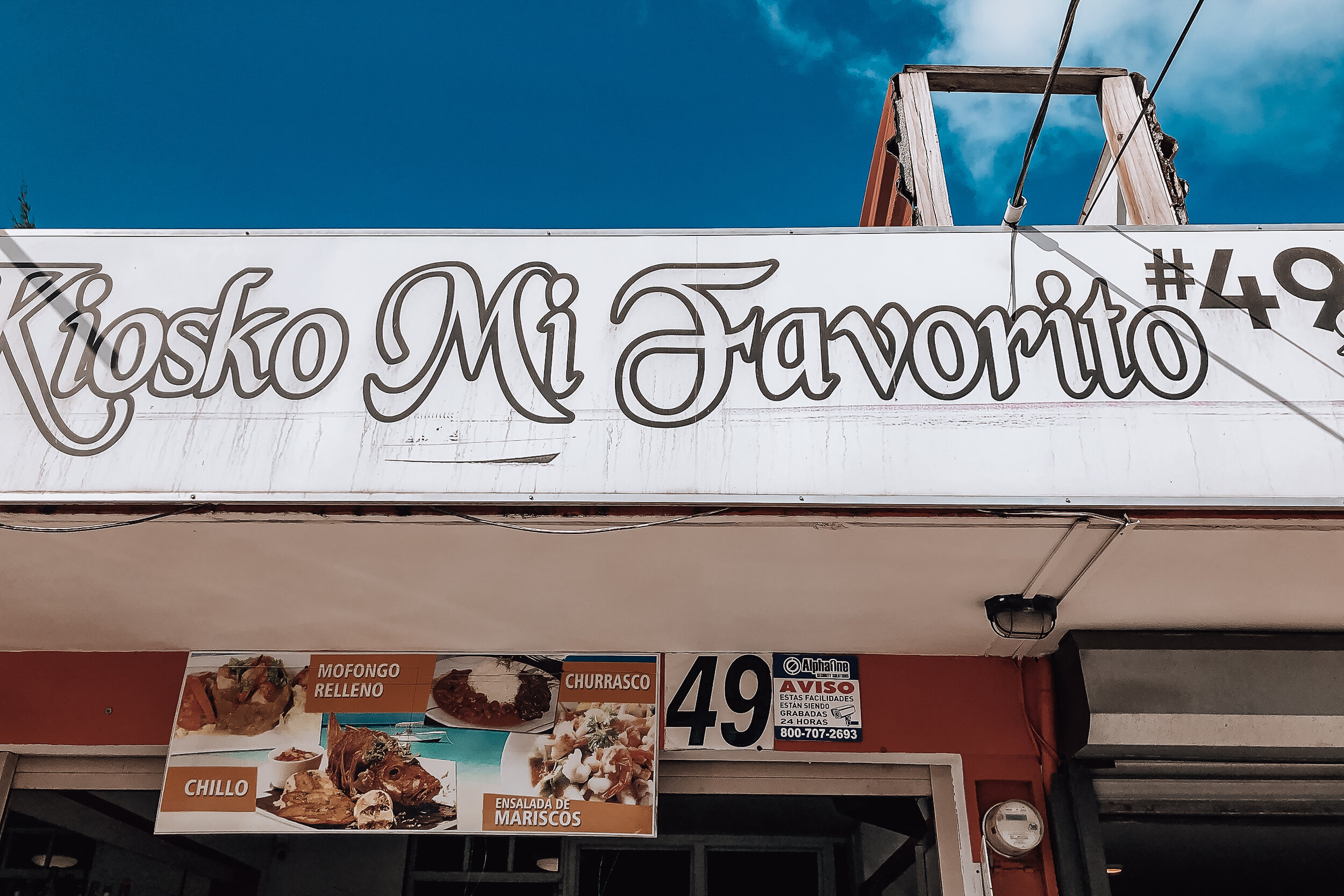
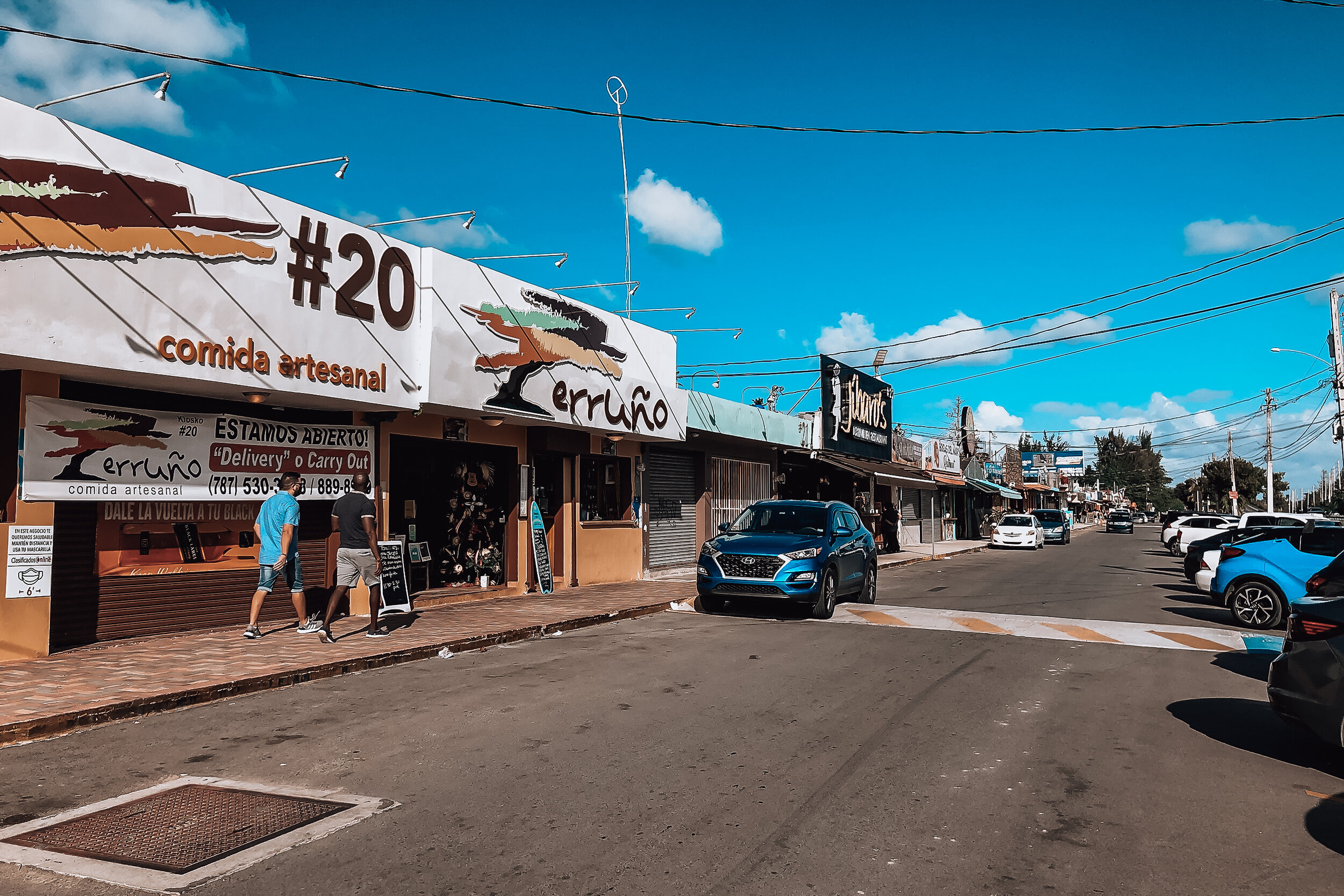
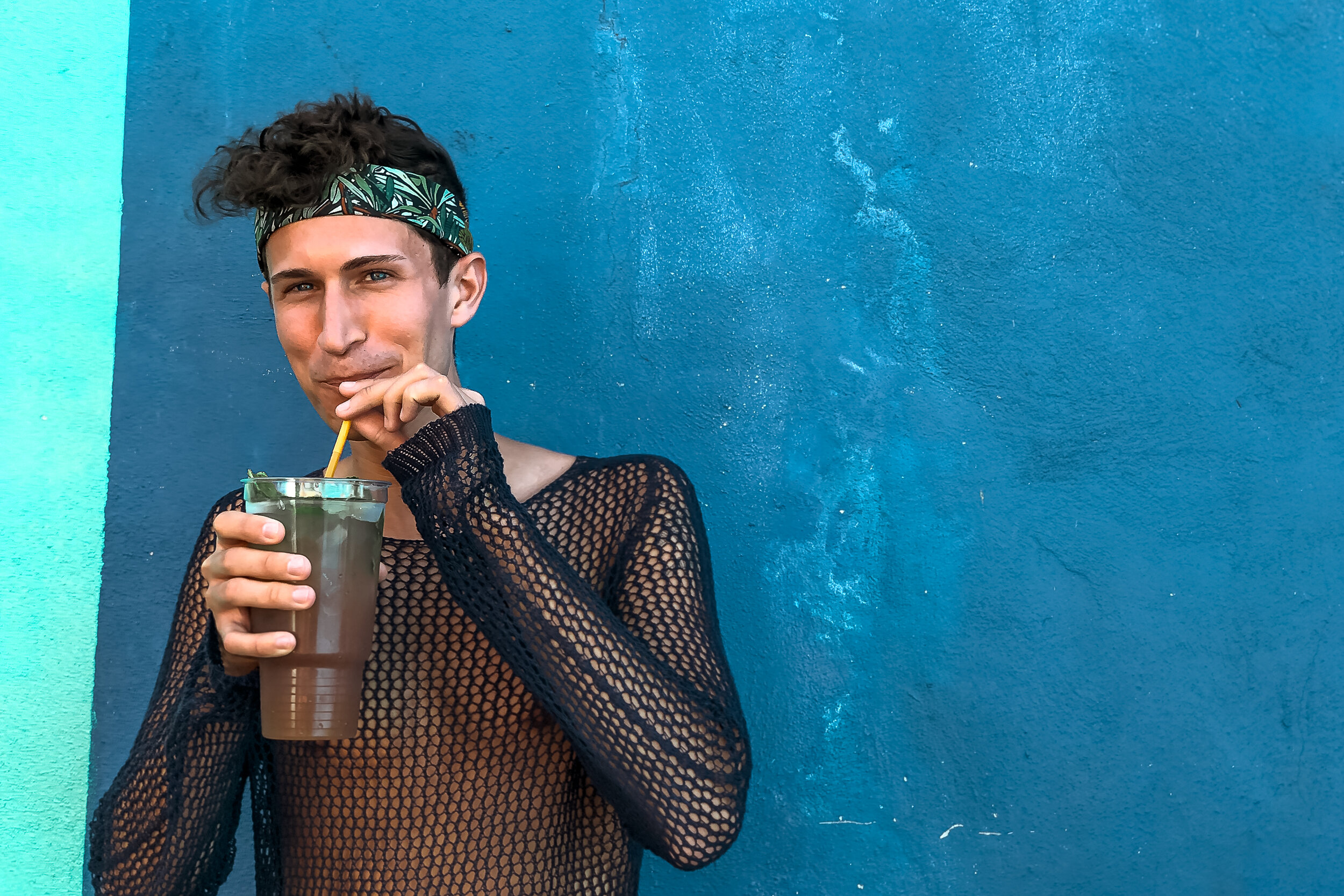
Luquillo
Nearby El Yunque is the town of Luquillo, known for the Luquillo Kiosks. Located along the highway, there are 60 street-side stalls and restaurants selling Puerto Rican street food and classic Caribbean dishes. These are some of our favorites to try:
Whole Red Snapper (Chillo). The whole fish is typically fried until crispy from head to tail. The meat is tender and easily pulls away from the bones while the fins and tails break off like “chips.”
Caribbean Lobster. Also known as a spiny lobster, it lacks the large claws of a Maine lobster but is filled with much more meat.
Mofongo. Fried green plantains that are mashed in a wooden mortar and pestle with oil, garlic and salt. Many restaurants make Stuffed Mofongo with seafood, vegetables or meat.
Carrucho. The meat of the queen conch. It’s often served raw as ceviche or salad either alone or with an arepa.
Salmorejo. A mixture of tomato and land crab meat strewed together.
Empanadillas. Similar to empanadas but slightly flakier with rolled edges.
Alcapurrias. A fritter made from green plantain and cassava molded with a leaf and fried. They’re typically filled with annatto oil and a meat.
Bacalaítos. Large flat round cod and batter fried fritters.
Kiosks to Visit
Kiosko #7 de Sonia & Peyin + Kiosco Mi Favorito #49 & #52 + El Castillo del Mar Kiosco #54. Visit any of these kiosks for Puerto Rican street food like empanadillas, alcapurrias, bacalaítos and seafood salad in an arepa.
La Parrilla Bar & Grill (Kiosko 2). For locally caught seafood & Caribbean lobsters.
Terruño Comida Artesanal (Kiosko #20). For classic dishes like mofongo, carrucho, coconut rice and plantains.
Relle Na’o (Kiosko 40). For vegan options and build your own mofongo.
Mojito Lab (Kiosko 42). For extra large mojitos & cocktails.
Beaches
After the Kiosks, head to one of the beaches. Luquillo Beach (Playa Balneario) is a swimmable palm lined beach behind the kiosks with more food stalls selling empanadas and Pina Coladas served in hallowed out pineapples. Parking costs $5. Playa Azul, is the other main beach in Luquillo for swimming, snorkeling, paddle boarding, kite surfing, and kayaking.
Las Croabas
Las Croabas is the furthest northeastern part of Puerto Rico. It’s a popular place for marine activities, exploring nature, relaxing on the beaches and kayaking to the bioluminescent bay.
Laguna Grande (Bioluminescent Bay)
Kayaking through the mangrove forests at night to reach the bioluminescent bay is one of our favorite things to do in Puerto Rico! In the lagoon, you can run your hands through the water, let it run down your arms and splash around. Movement causes the dinoflagellates (bioluminescent plankton) in the water to glow a bright blue color.
Book a Tour. You need to book a tour to visit Laguna Grande. There are a dozen companies offering nightly tours from Parque Las Croabas. Most offer two tour times, one at twilight and one hours after sunset. The biggest difference between the twilight tour and nighttime tour is how much of the mangrove forest you can see while kayaking to the lagoon. Tours cost around $50/person and last 1h 30min. We’ve booked through Island Kayaking Adventure and Kayaking Puerto Rico.
Good to Know:
Visit on a sunny day, the dinoflagellates are more active at night.
Avoid going when the moon is full, the dinoflagellates are difficult to see. If you do, tour guides will bring tarps to cover the kayaks to block out the light.
Don’t bring your phone for pictures, they can’t capture the bioluminescence.

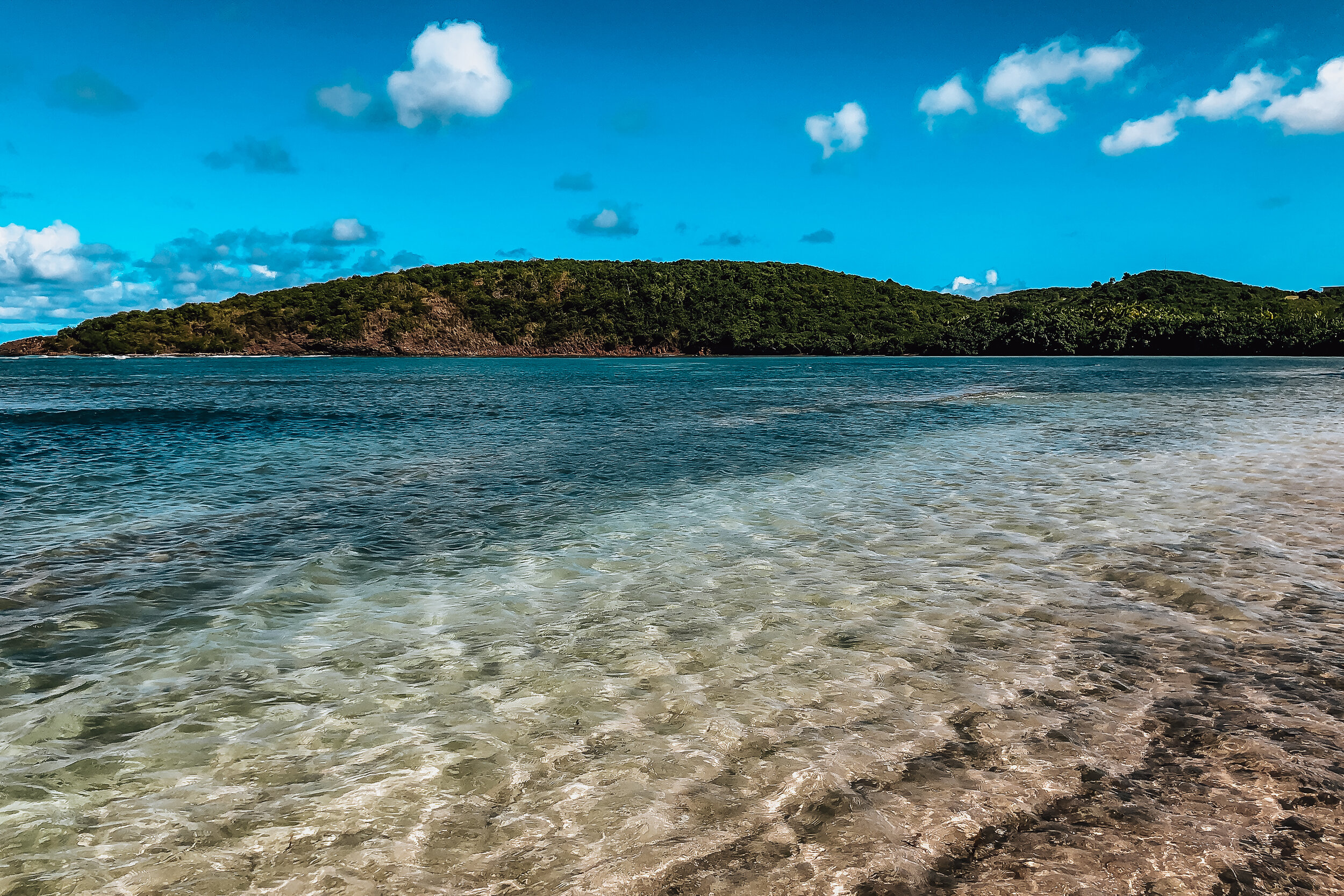
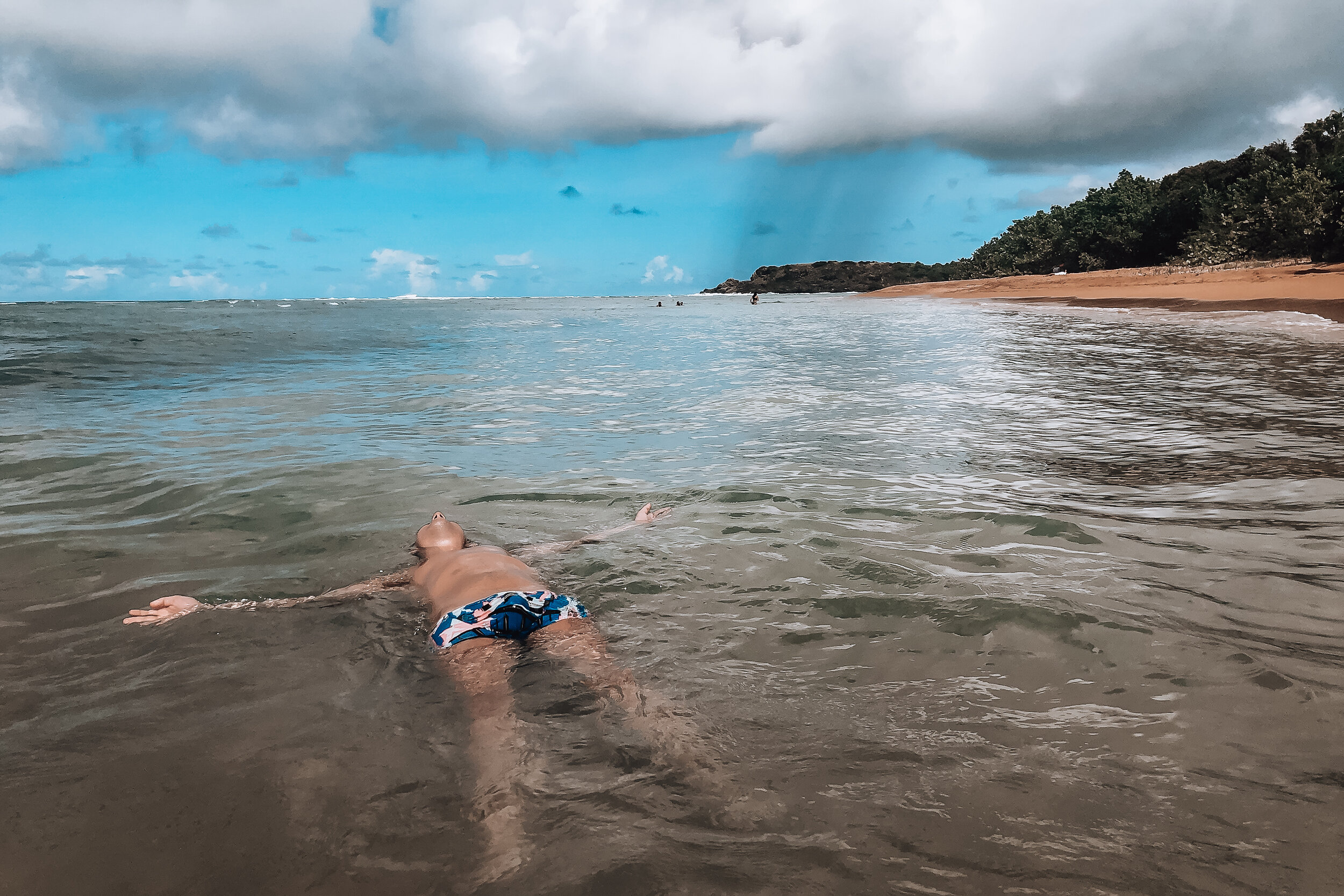
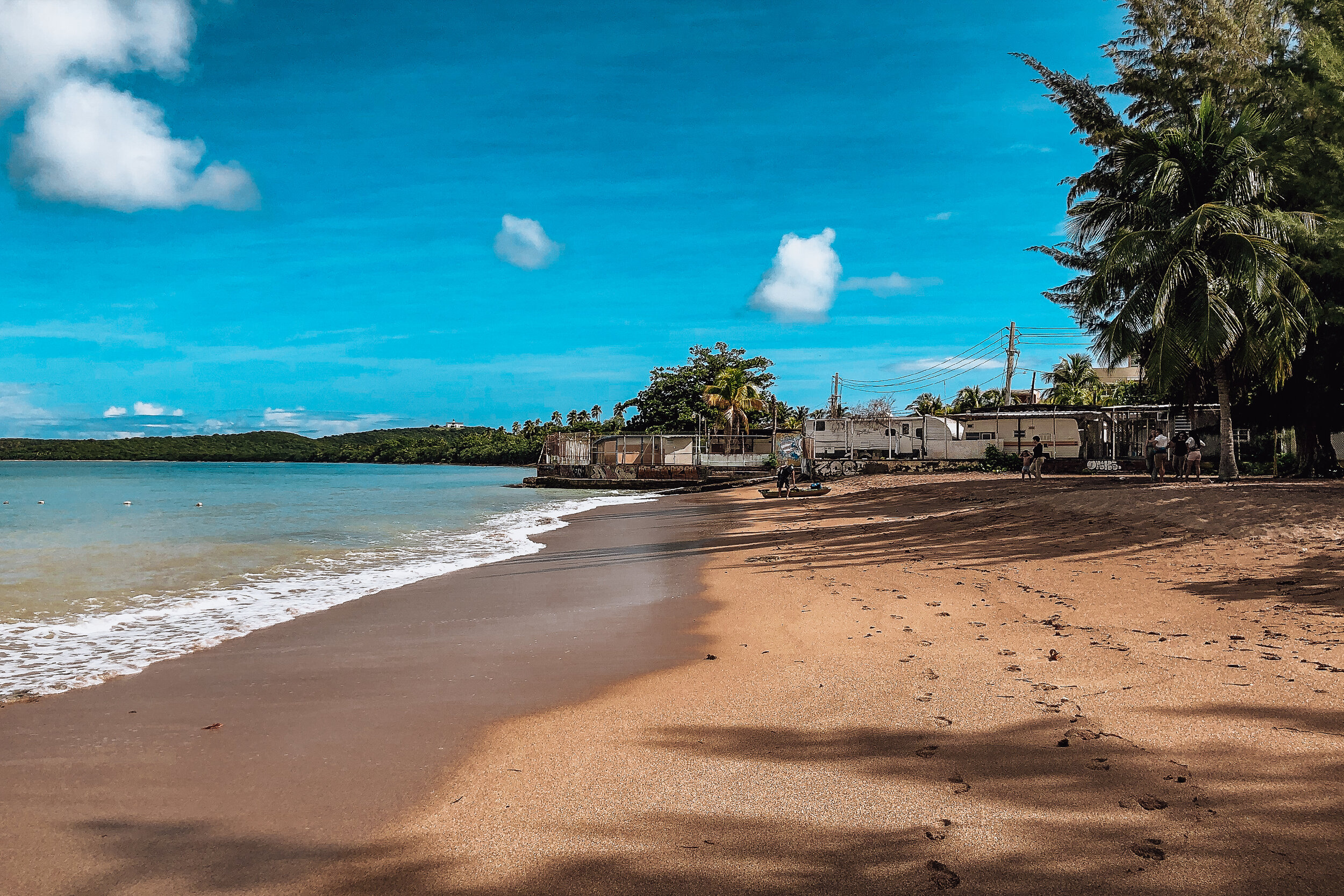
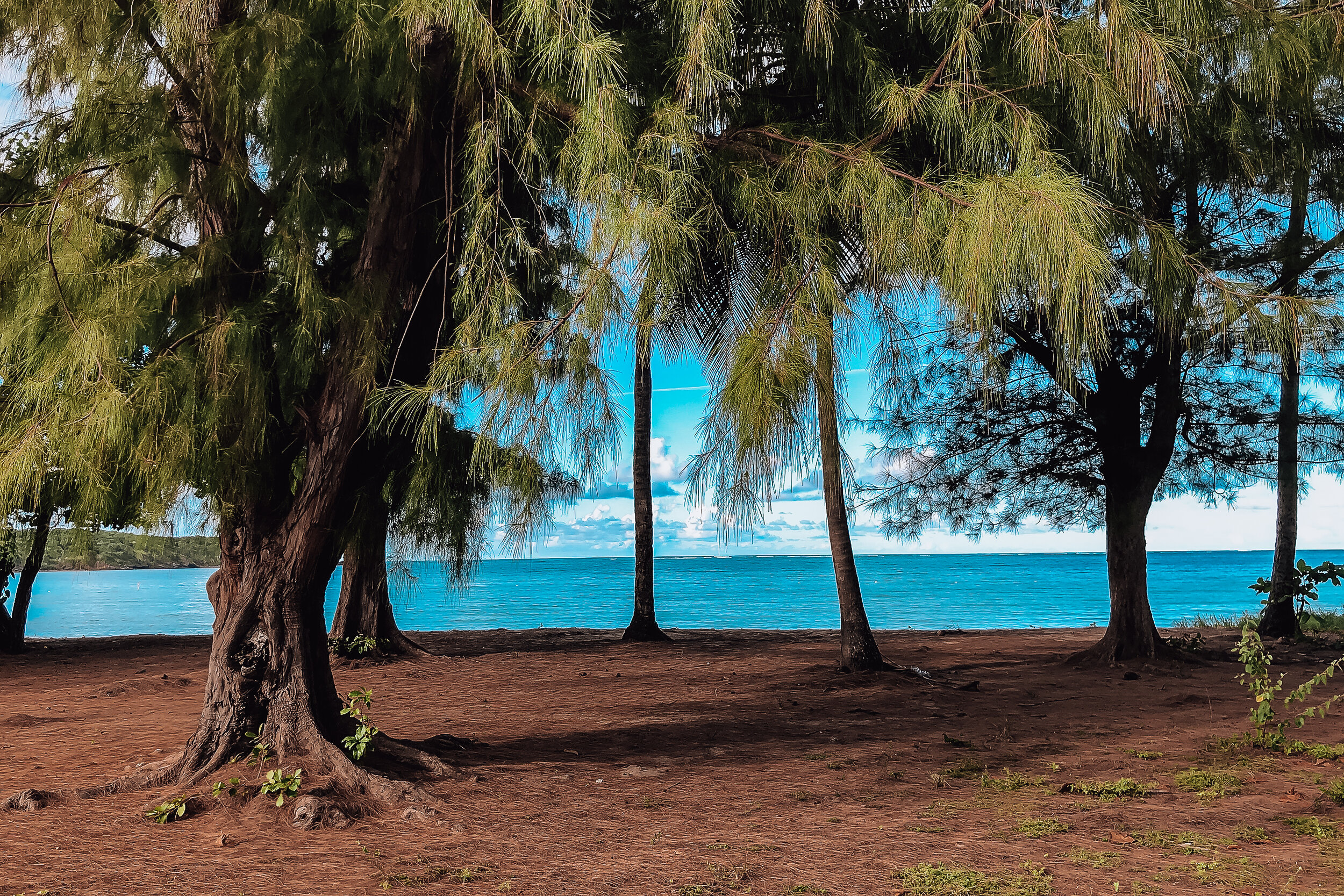
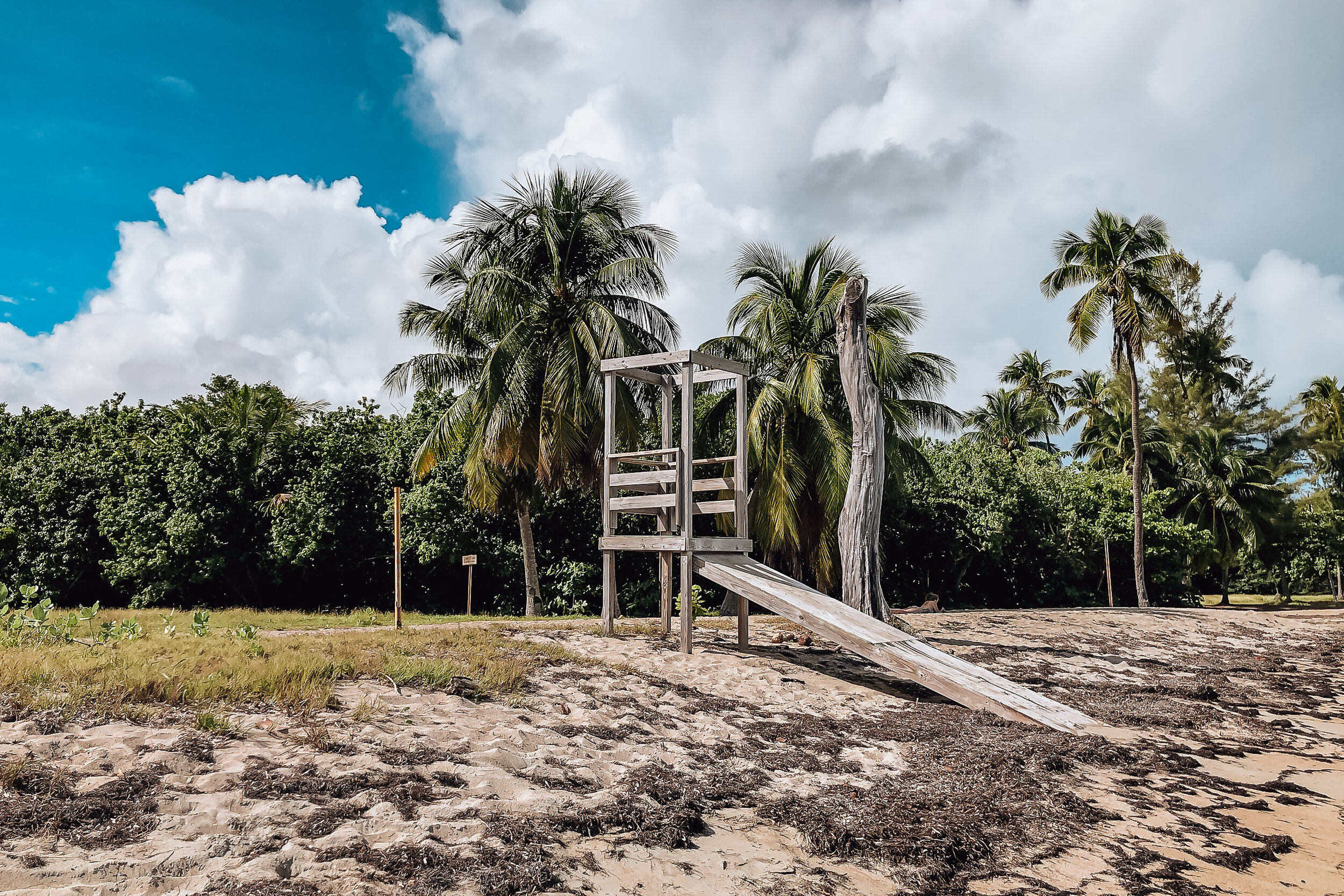
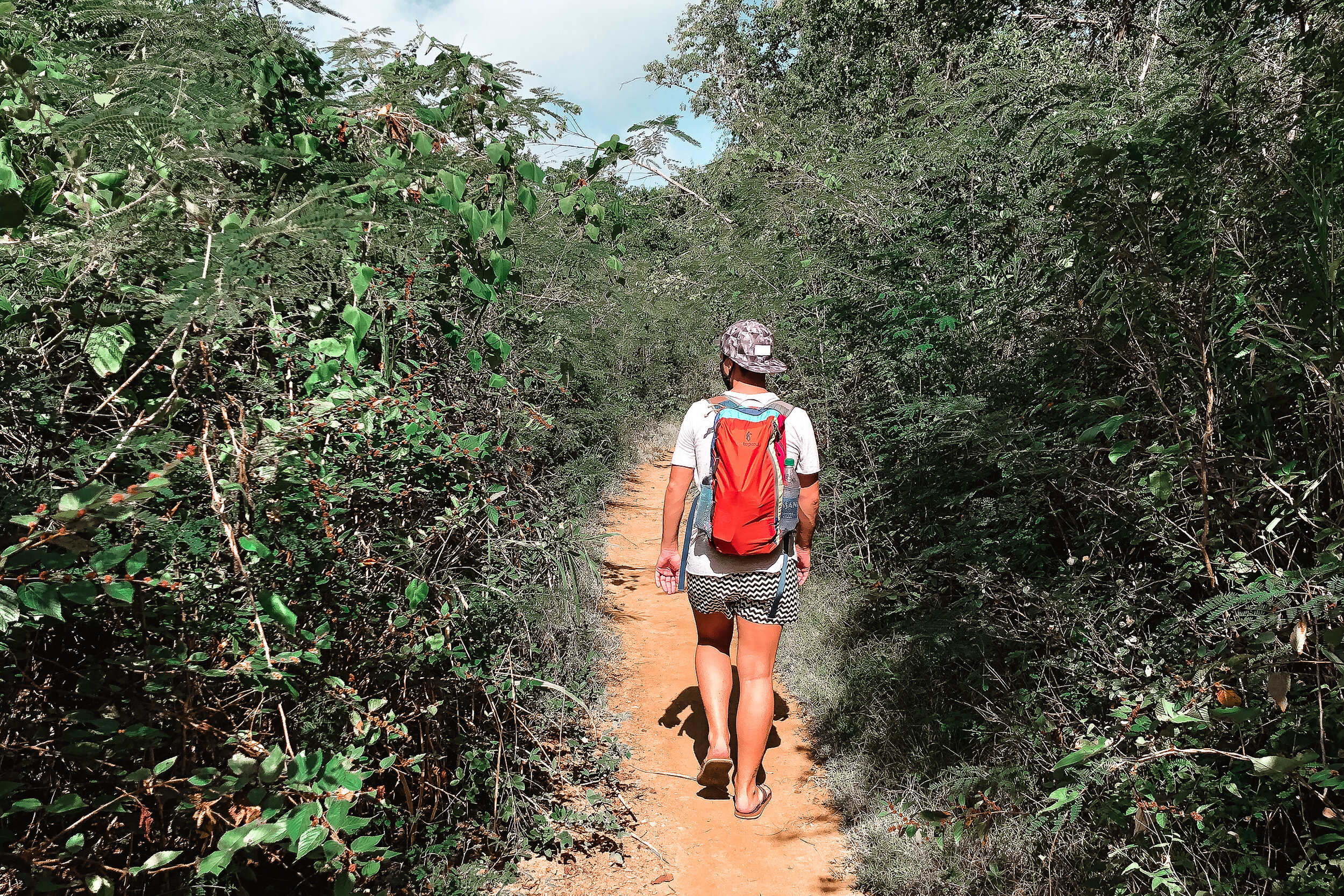
Visit the Beaches
Seven Seas Beach. This is the main beach in Las Croabas. It’s great for swimming, snorkeling and renting kayaks or stand up paddles. The beach has a sandy shore with a rocky ledge several feet into the water. The beach is divided by a mobile home park. The east side is narrow but long and great for walking. The west side is larger with pavilions available for rent and a nature trail leading to Playa Escondida and Playa Colora.
Playa La Matita. A semi secluded beach east of Seven Seas Beach. It’s a great destination to kayak to, look for conch shells or hike to La Zanja from.
Playa Escondida. This long golden sand beach has calm and shallow waters perfect for lounging in. The shore is lined with sea grape trees offering shaded nooks to relax under. The beach is popular with all groups of people, especially the LGBTQ+ community. It’s one of those beautiful and welcoming places you’ll want to stay at all day!
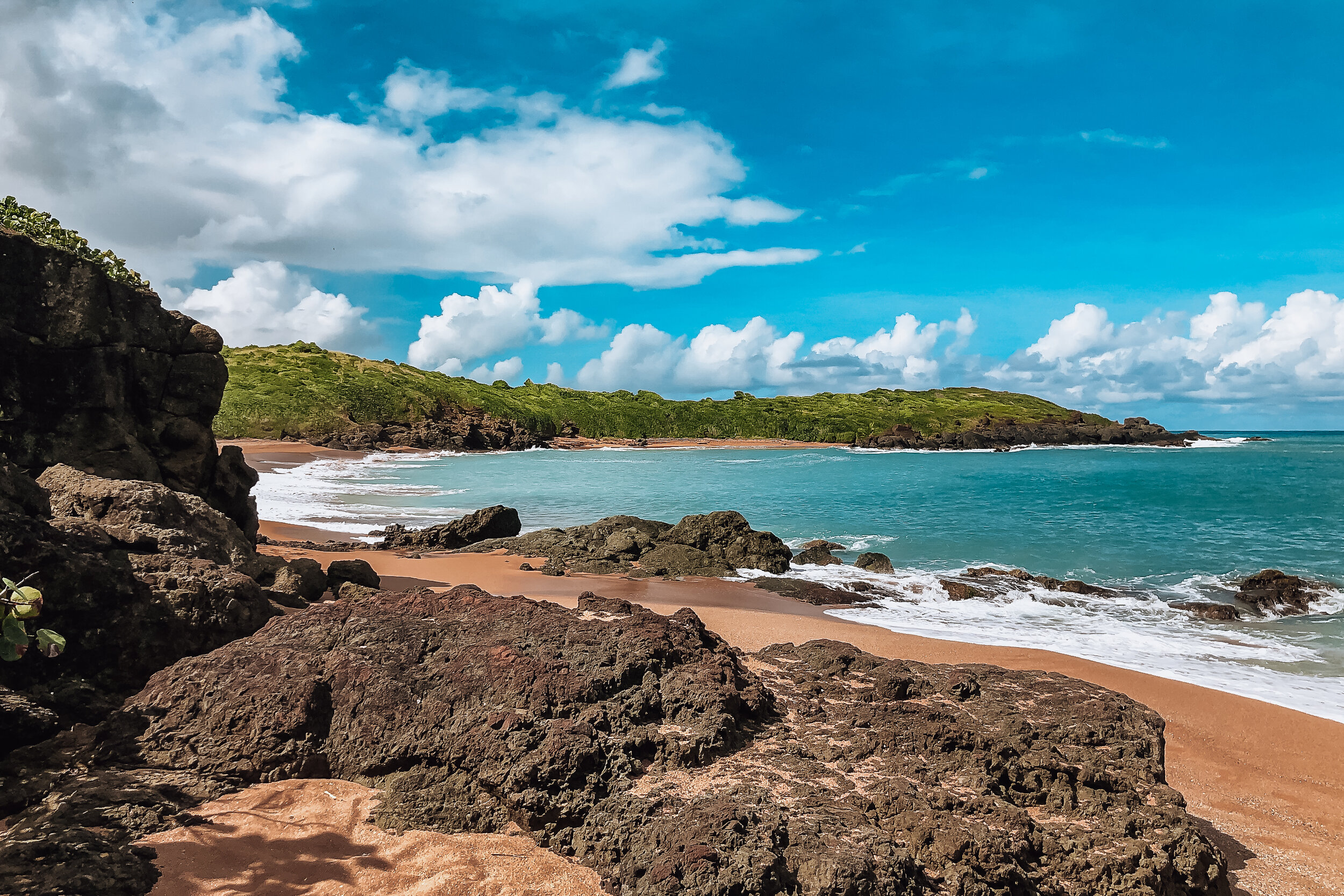
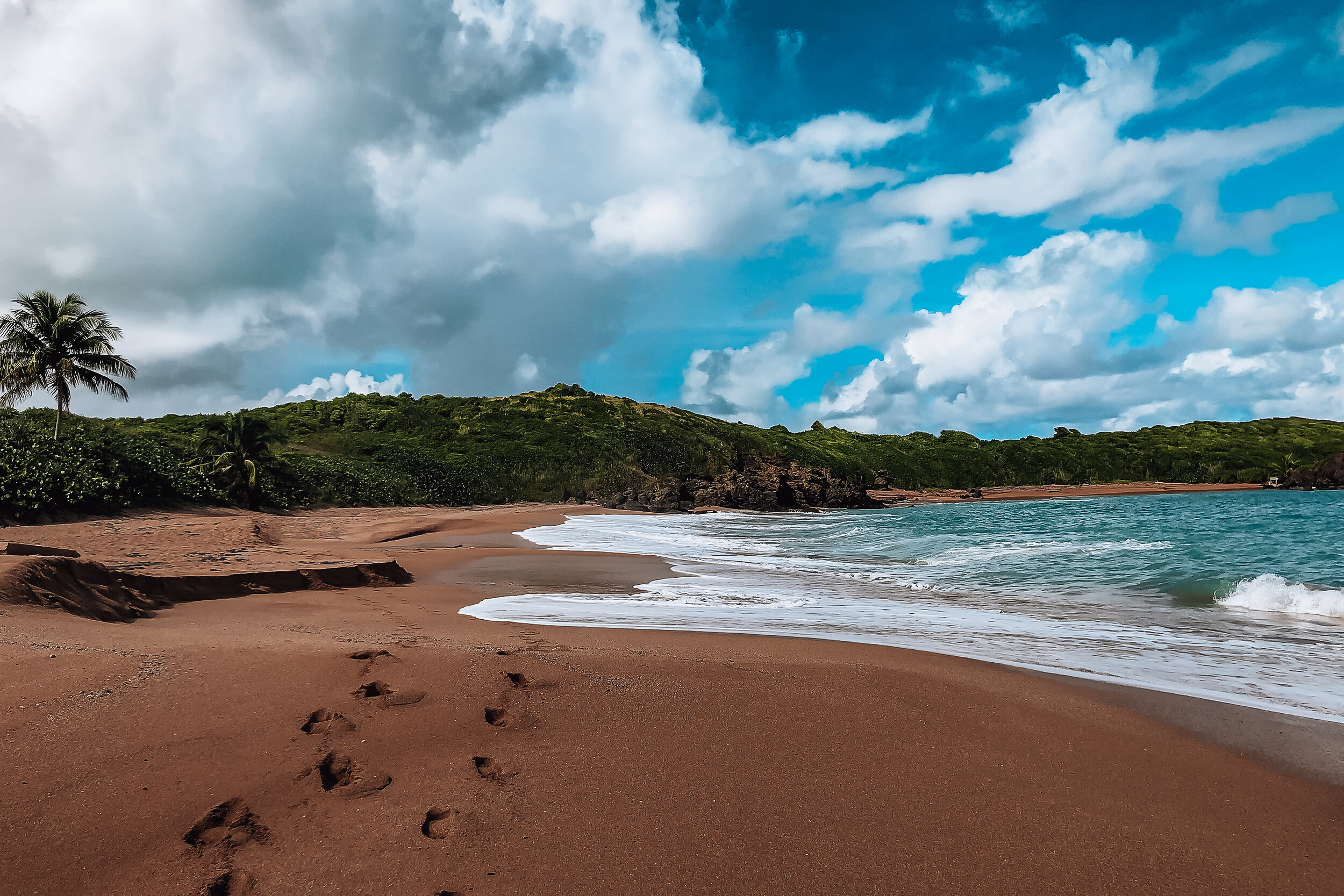

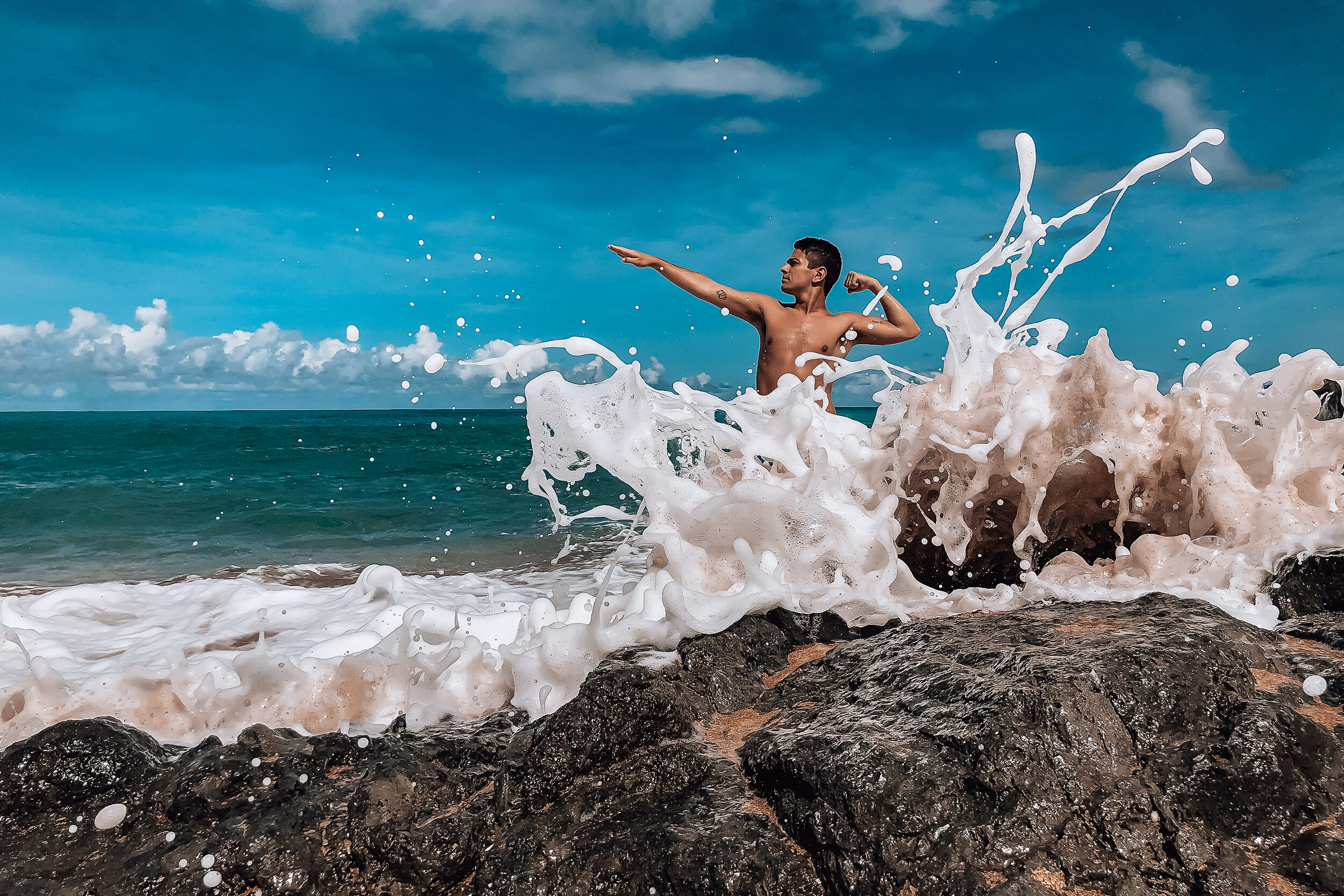

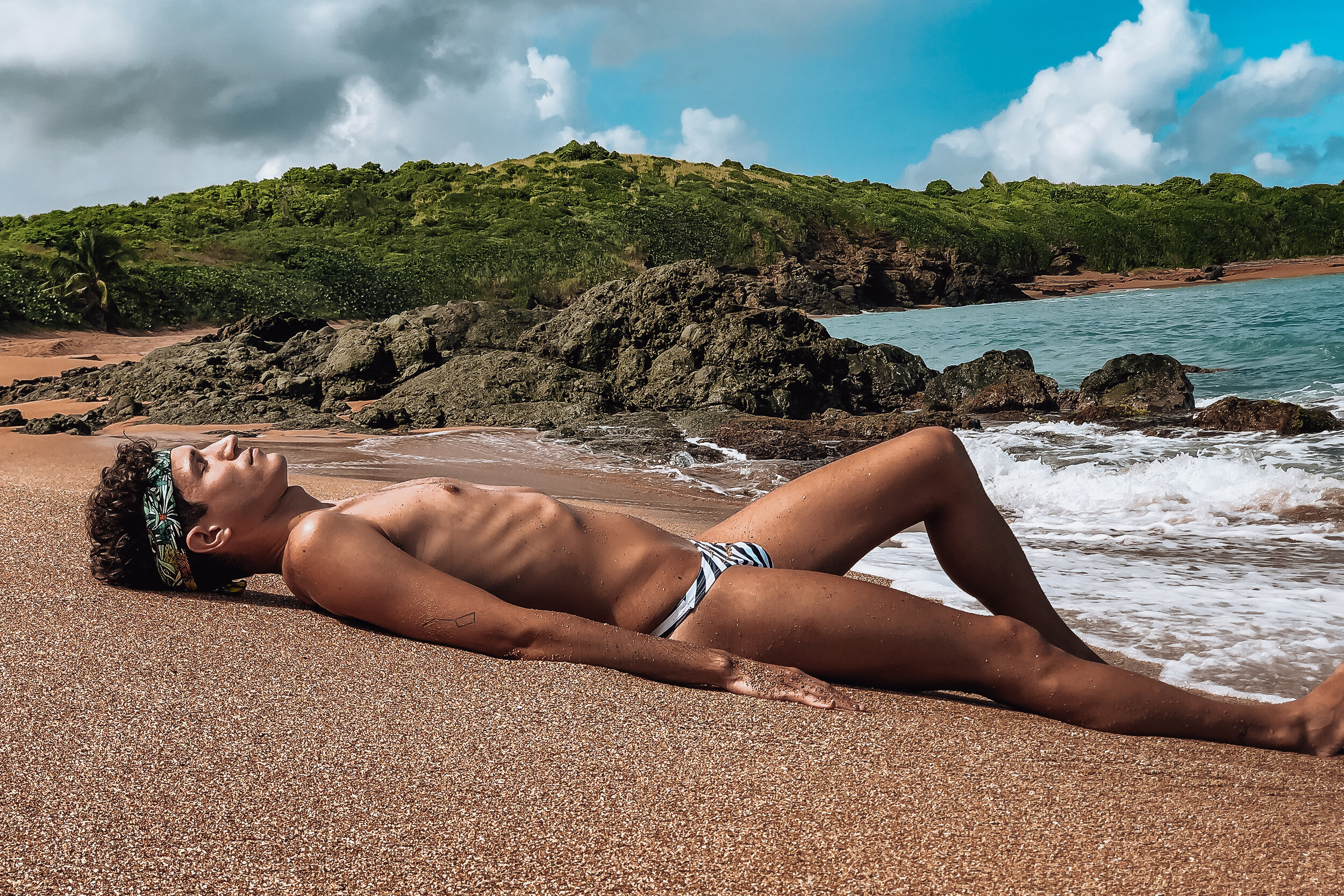
Playa Colora. A semi secluded beach great for sunbathing and enjoying nature. The waves are large and the undertow is strong making it un-safe for swimming. Though not an official nude beach, people come here to sunbathe naked near the rock formations to the right.
Getting to Escondida & Colora. Both beaches are accessible through a nature trail at the west end of Seven Seas Beach. It’s an easy walk that takes about 30 minutes. The trail forks after about 5 minutes, take a right and continue walking. This trails leads directly to Playa Escondida. Halfway through the trail is a short path that leads to Playa Colora.
Pro-tip: Please take your trash with you and don’t pile it up at the trail heads.
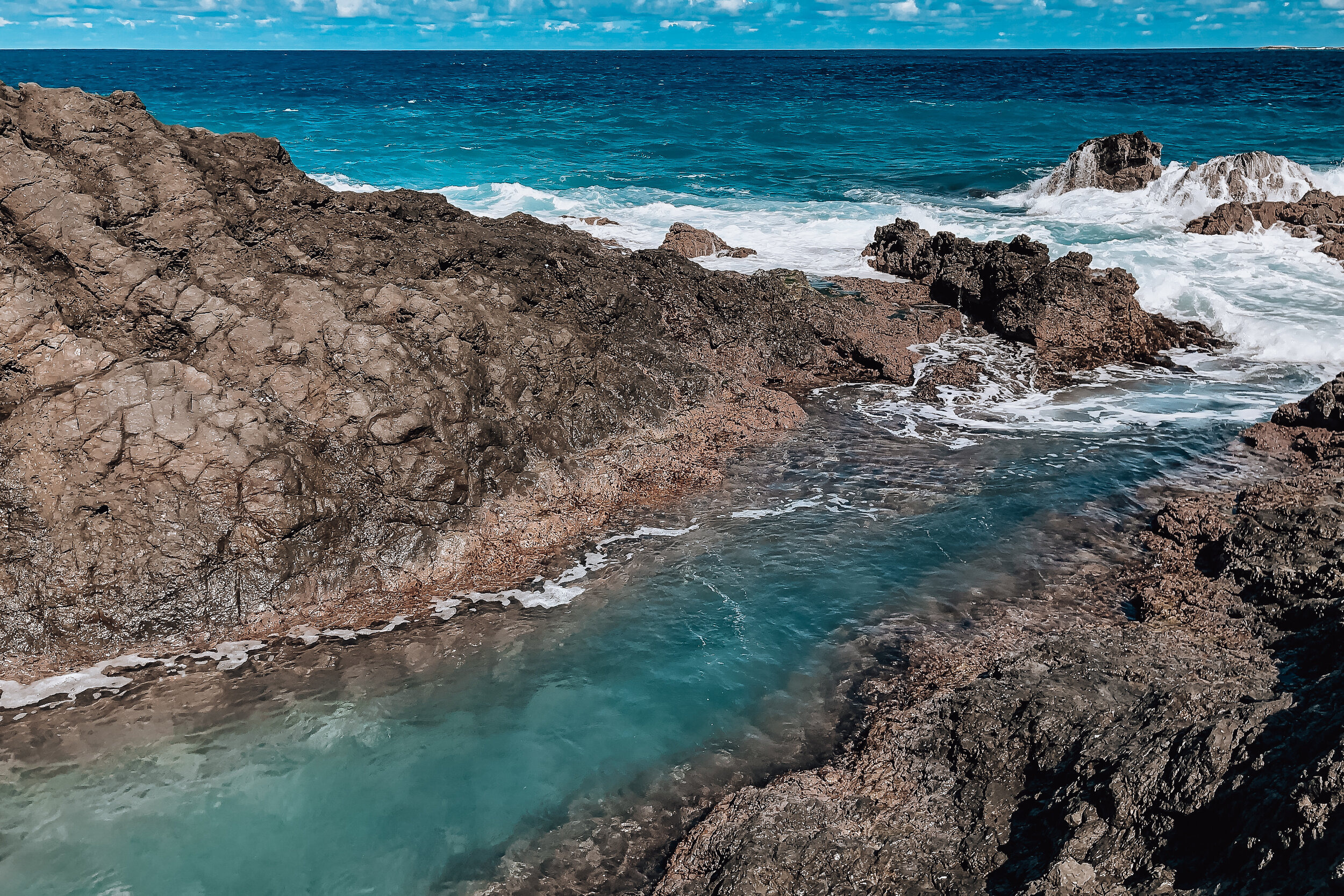
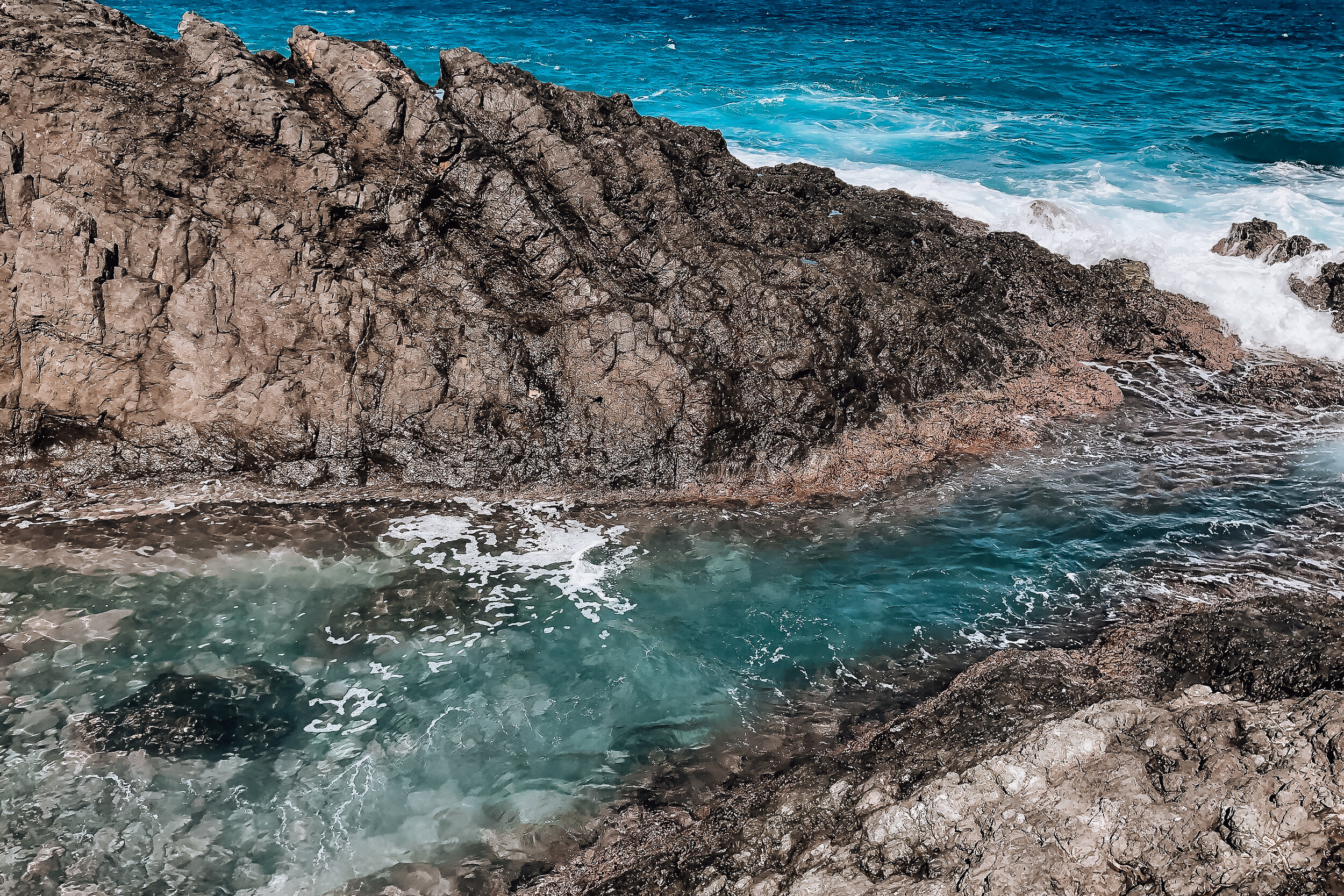
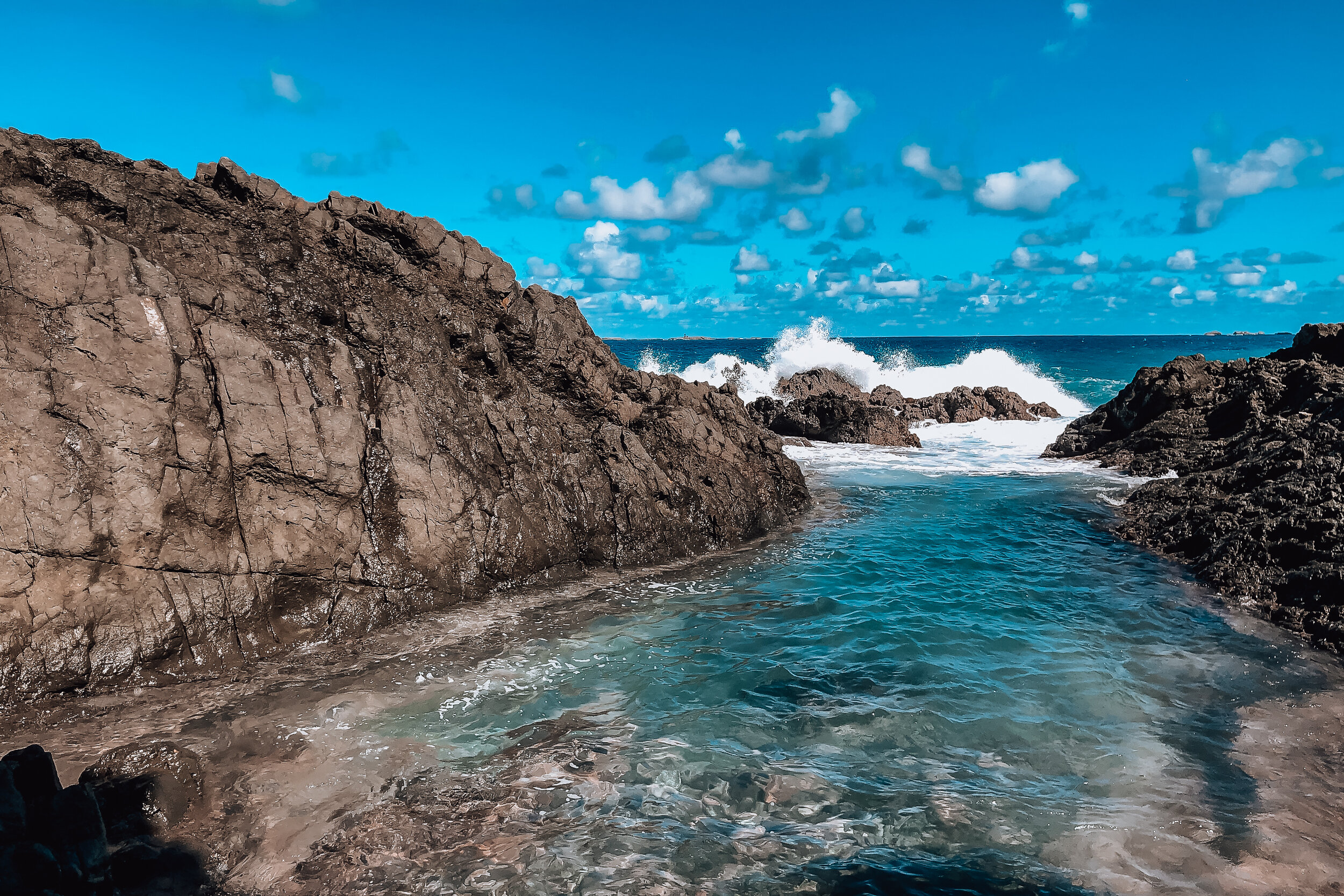
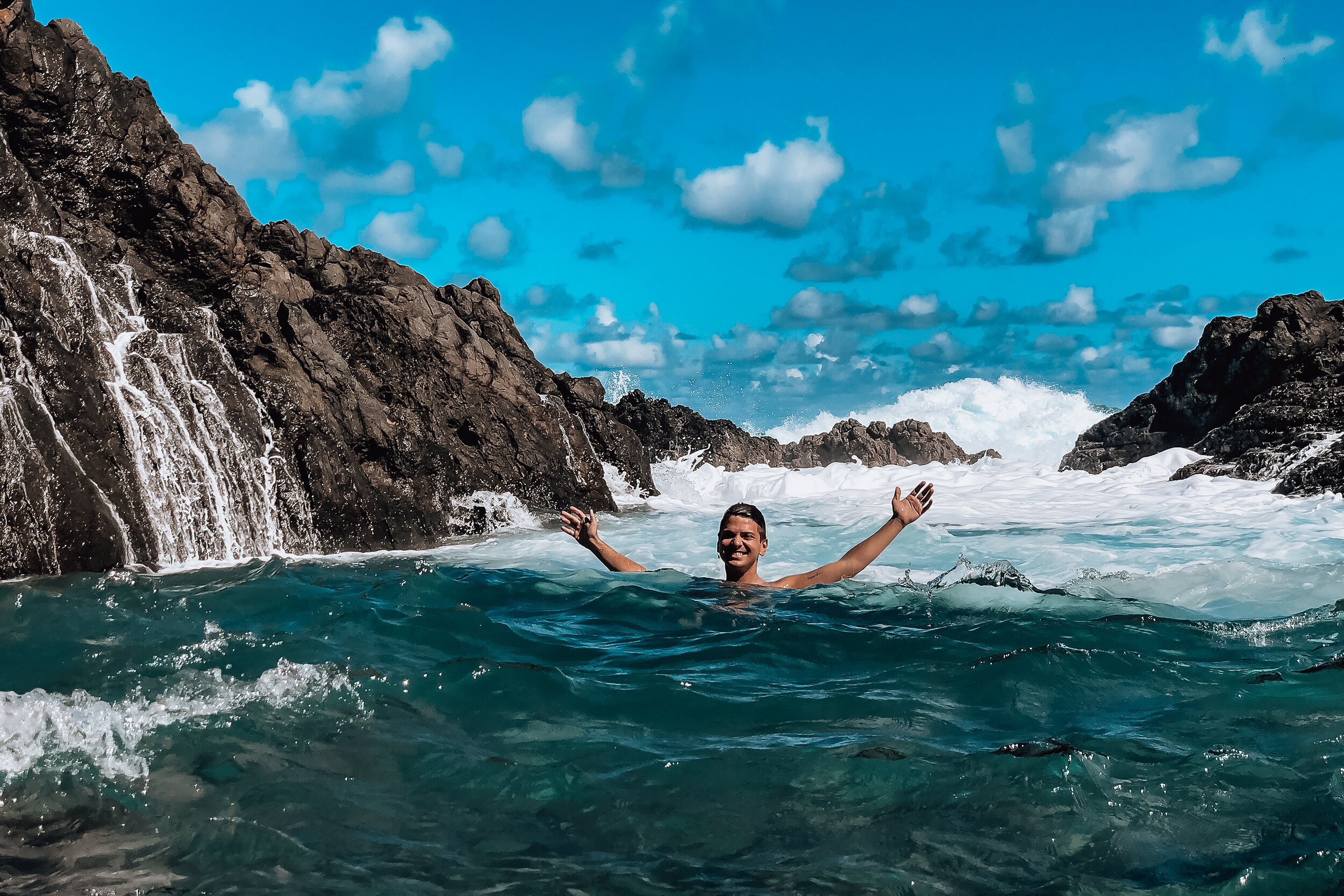
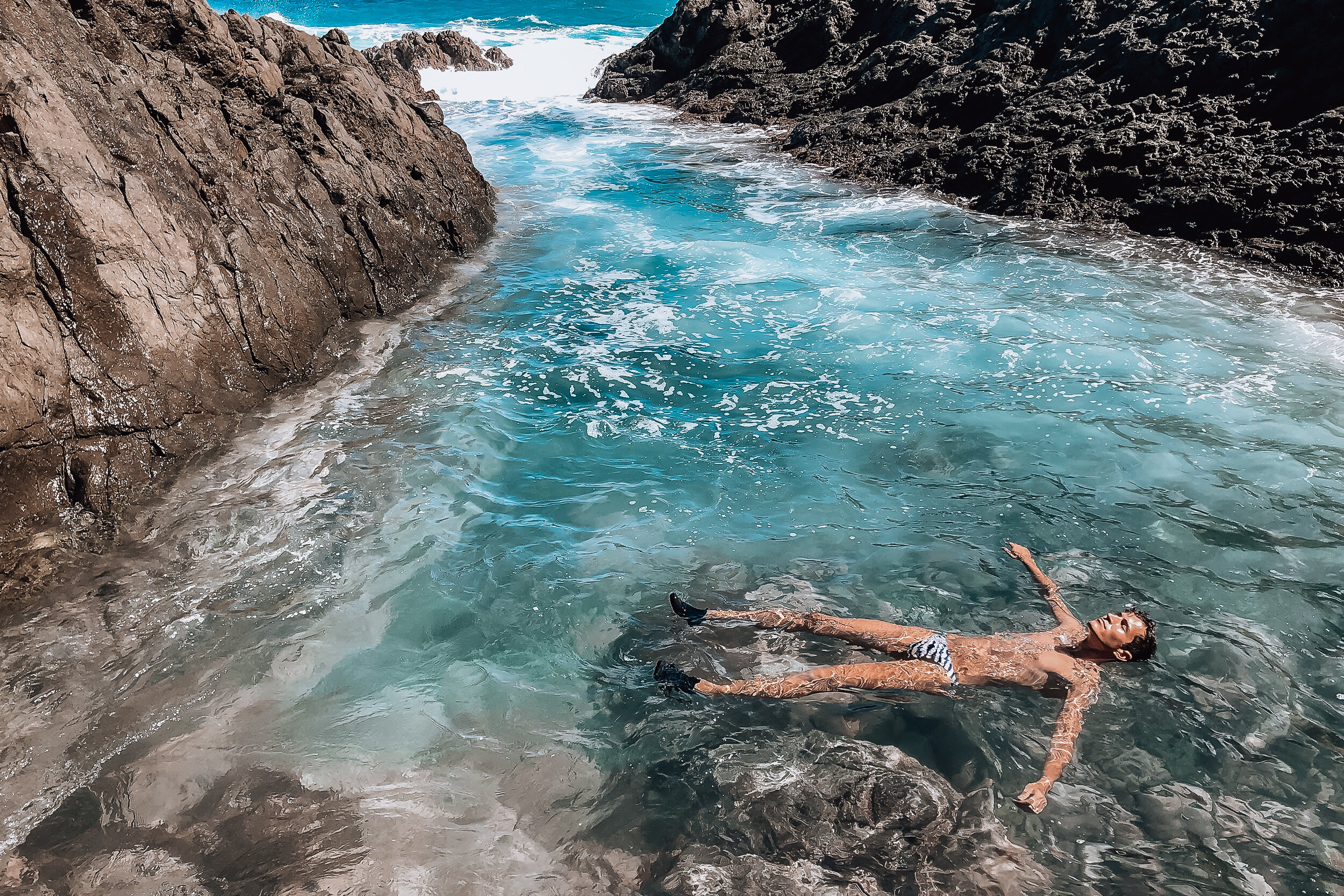

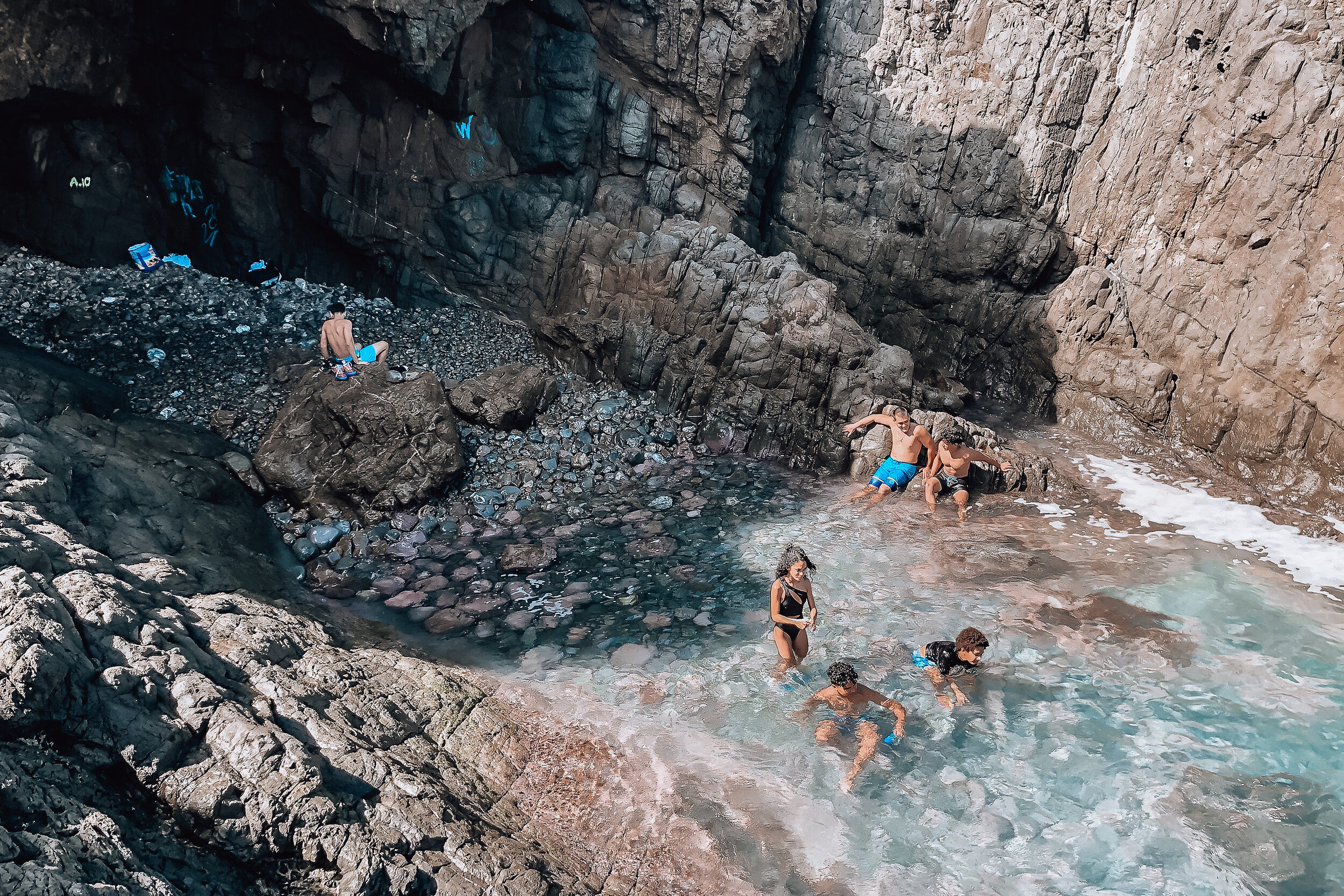
La Zanja
La Zanja is a natural tench-like wave pool nestled along a cliffside and protected from ferocious Atlantic waves by large jagged rock formations. The pool itself is a secluded and unreal place to swim and listen to the ocean.
Getting to La Zanja. Walk down Seven Seas Beach, past Playa La Matita until it looks like you can go no further. From here there will be a trail leading into the tree-line. The trail forks at multiple points but all lead to a road. Take the road ending at a stoney beach. At the stoney beach, walk to the left until you see a trail leading up the hill and along the cliffside. This trail will lead you to La Zanja. From start to finish, it takes about 1 hour to reach.
Safety
Bring water shoes & wear shoes with good soles while hiking on the rocks.
Be very careful on the rocks and of waves
Be mindful of the current within La Zanja.
Restaurants
El Pescador. Located in Parque Las Croabas, this is one of our favorite places to dine at for seafood and Puerto Rican dishes. Come here for a pan fried red snapper, the stuffed mofongo, creole crab salad, jumbo shrimp and anything with conch.
Las Vistas Cafe. A hidden gem and easily the best brunch spot in the area. The restaurant is located on the roof of a house with surrounding views of Las Croabas. Everything is handmade and takes a little longer but is well worth the wait. Try the fresh fruit salad and juices, strong coffee and brunch dishes like the French toast with bananas and coconut or eggs Florentine on a arepa.
La Estacion. A former gas station turned into an open air jungle themed restaurant offering grilled and smoked meats and seafood specials.
Getting Around Las Croabas
Getting around Las Croabas can be difficult without a car. There are no Ubers and are very few taxis. If you need one, call this number to be transferred to a driver: 939-644-2817
Culebra
Culebra is a tiny island half way between Las Croabas and the US Virgin Islands. Things move a little slower here making it a great place to relax and appreciate life. The island has a small town with great restaurants, is home to multiple nature reserves and a variety of beaches.
Getting to Culebra
By Ferry. Take the Por Ferry in Ceiba, about 1 hour from San Juan. The best way to get here is by Uber or Taxi. Either cost between $60 and $100. The ferry operates on a strict schedule. You need to buy tickets at least 1 week in advance, especially if traveling on a weekend. Round trip tickets cost approximately $12. The ferry ride lasts about 45min. The ferry also operates between Ceiba and Vieques
By Air. This is the quickest way to visit Culebra. Book flights on a puddle jumper through Cape Air or Seaborne Airlines. Flights take less than 30min and can cost between $200 and $300 round trip. Due to cost, we’ve opted for the ferry but plan to splurge on flights one time for the experience of it. Both of these airlines also operate on islands across the Caribbean.
Getting Around Culebra
By Golf Cart or Jeep. Renting a vehicle is expensive but is worth the price if you’re only visiting for a couple of days. There are two rental companies on the island, Jerry’s Jeep Rental and Carlos Jeep Rental. If you plan to rent a vehicle, call ahead and book it at least 1 week in advance. Golf carts cost $80/day. Jeeps cost $120/day.
By Bike. There are no official bike rentals on the island however after asking around, we were given the numbers of locals that have bikes to rent. Call Mitzy at Culebra Concierge 787-742-3000.
On Foot. Though Culebra is a small island, getting around on foot outside of the town is difficult but not impossible. Many people are friendly enough to stop and give you a ride. Carry a flashlight when walking at night.
Things to Do
Swing from the Bridge. Swing from the rope tied to the bridge into the canal. Use the metal rod stored alongside the bridge to to retrieve the rope. Wear water shoes to protect your feet from the mussels.
Watch a Caribbean Sunset. Many of the western beaches like Tamarindo, Punta Soldado or Carlos Rosario are peaceful places to watch the sunset below the Caribbean. Equally, Sunset Grill on the hill is another spot. Make a reservation and come early.
Go Snorkeling. Our favorite time to go is around 10am or an hour before sunset. The sealife seems to be more active during these hours. The best beaches to spot sea turtles, eagle rays, conch and coral are Tamarindo, Carlos Rosario and Playa De Cascajo. Rent snorkel gear from Blue Water or Culebra Divers. Both are located next to the ferry terminal. Use reef safe sunscreen like Sunbum when snorkeling.
Visit the Beaches
Culebra has many great beaches all worth visiting for different reasons. There are white sand beaches, rocky beaches, remote beaches, unofficial nude beaches, beaches to snorkel at and beaches to look for conch shells.
Flamenco Beach. This beach has powdery white sand and blue turquoise waters perfect for swimming. It’s famous for its graffitied tanks. There are plenty of amenities: parking, umbrella/chair rentals, a campground and small kiosks with food & drinks.
Parking Fee $10
Umbrella/Chair Rental $5 each
Campground Fee $20/day
Zoni Beach. This beach is just as beautiful as Flamenco, easy to get to get to and not usually that busy. Outside of free parking, there are no amenities.
Playa Melones & Sardinas. Located about 20min on foot from downtown and easy to reach. These stone covered beaches are calm places to swim and snorkel. There is not much living coral near shore however we saw divers a couple hundred feet out.
Playa Tamarindo. A long stone covered beach amazing for snorkeling! There is a mix of living and dead coral and fields of sea grass. We’ve spotted sea turtles and eagle rays here multiple times!
Playa Carlos Rosario. A semi-remote beach equally great for snorkeling and sunsets. A trail from the parking lot at Flamenco leads here. We were warned to stay on the trail due to landmines left behind from military activity during the 1950s.
Playa Punta Soldado. A rocky beach great for finding conch shells. You’ll find a lot of fragments and occasionally a whole shell. Supposedly a good spot to snorkel though we’ve never tried here.
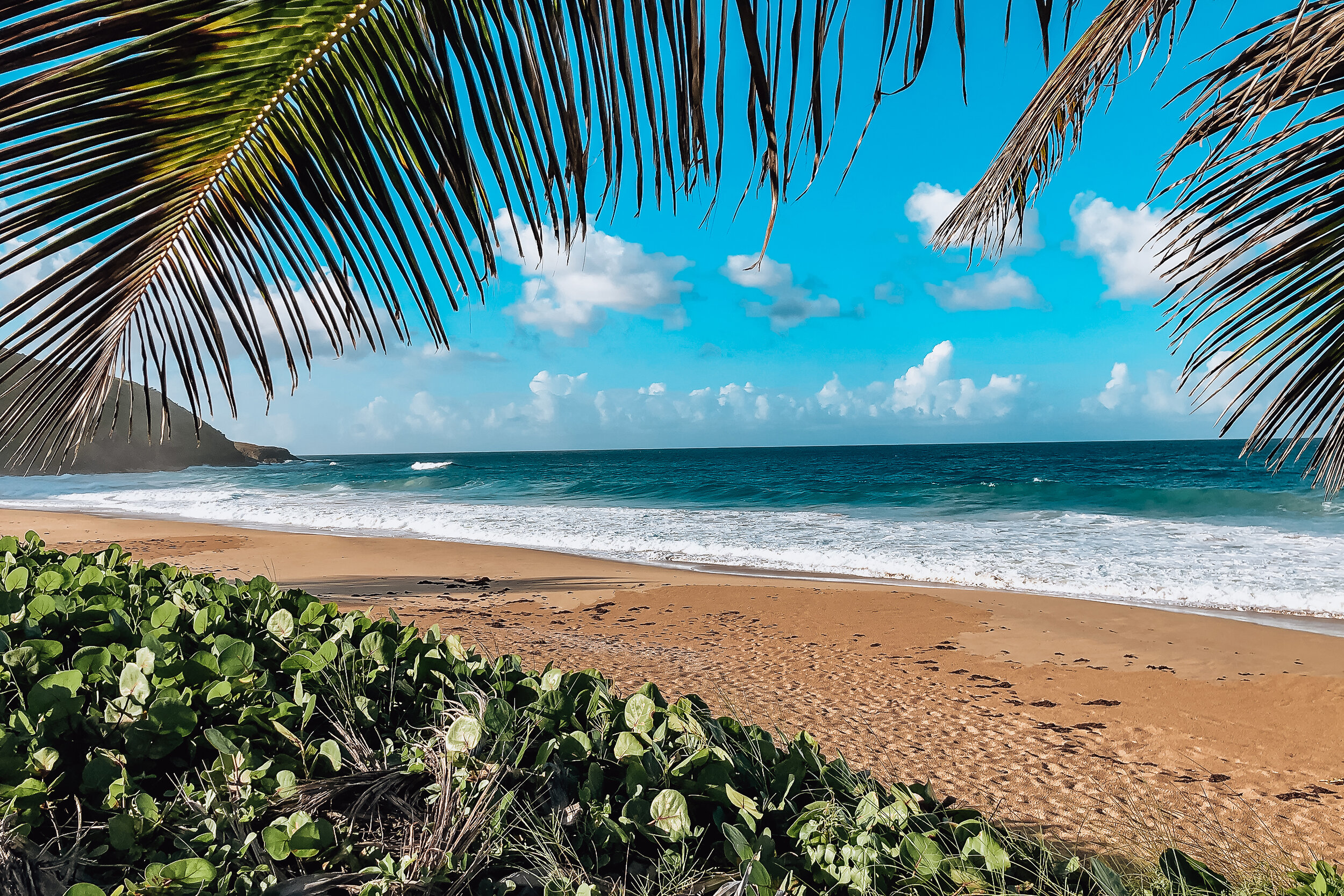
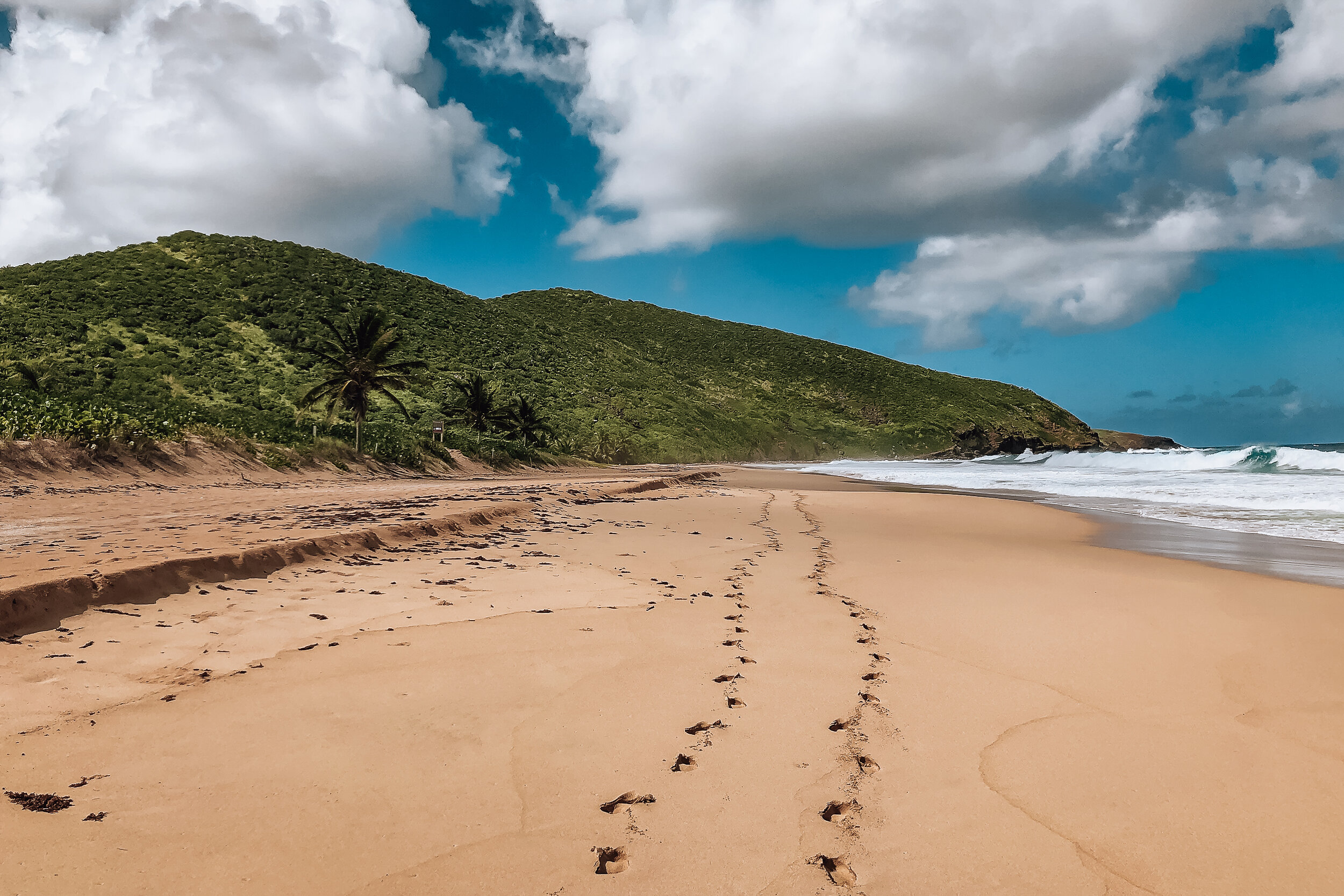
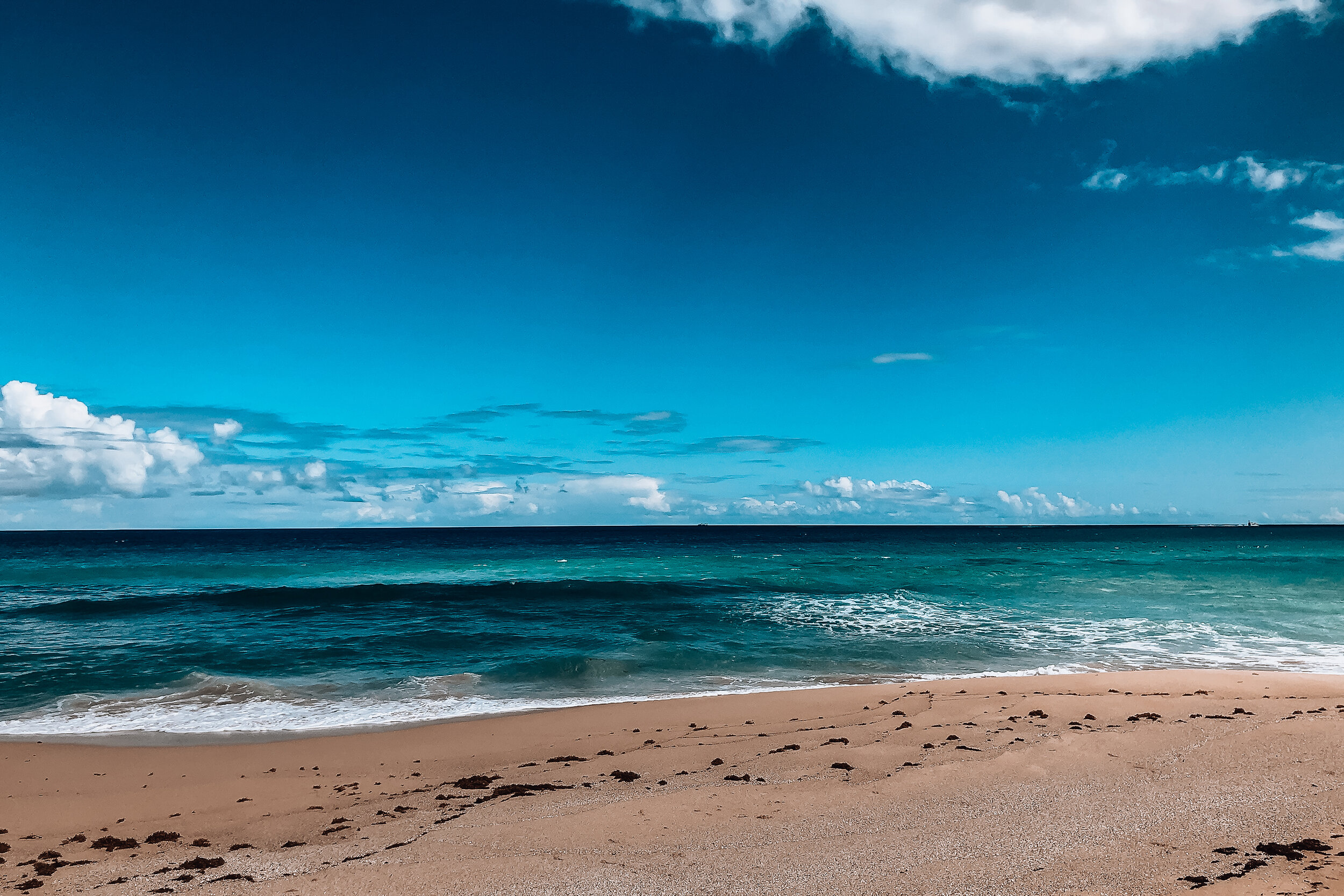
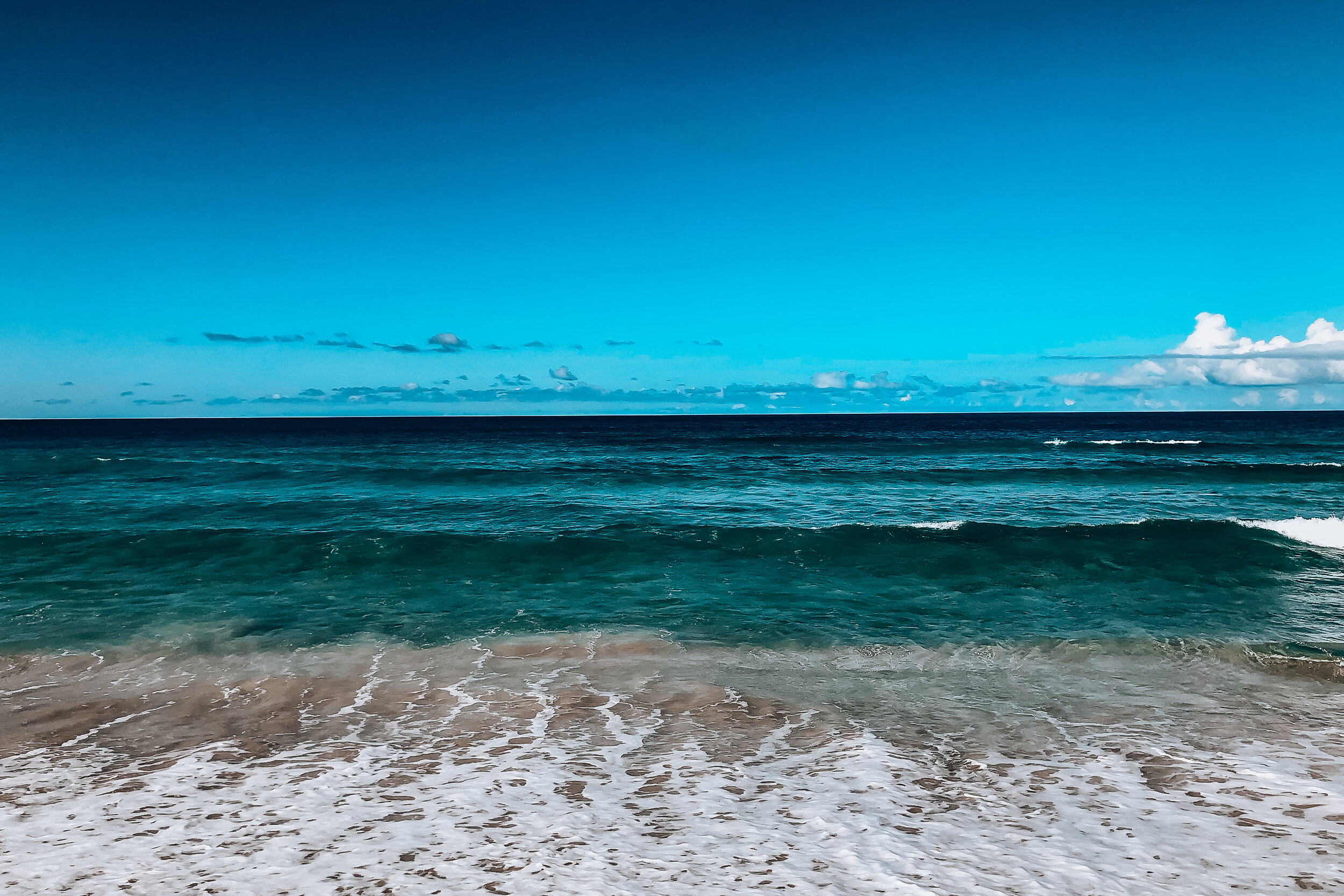
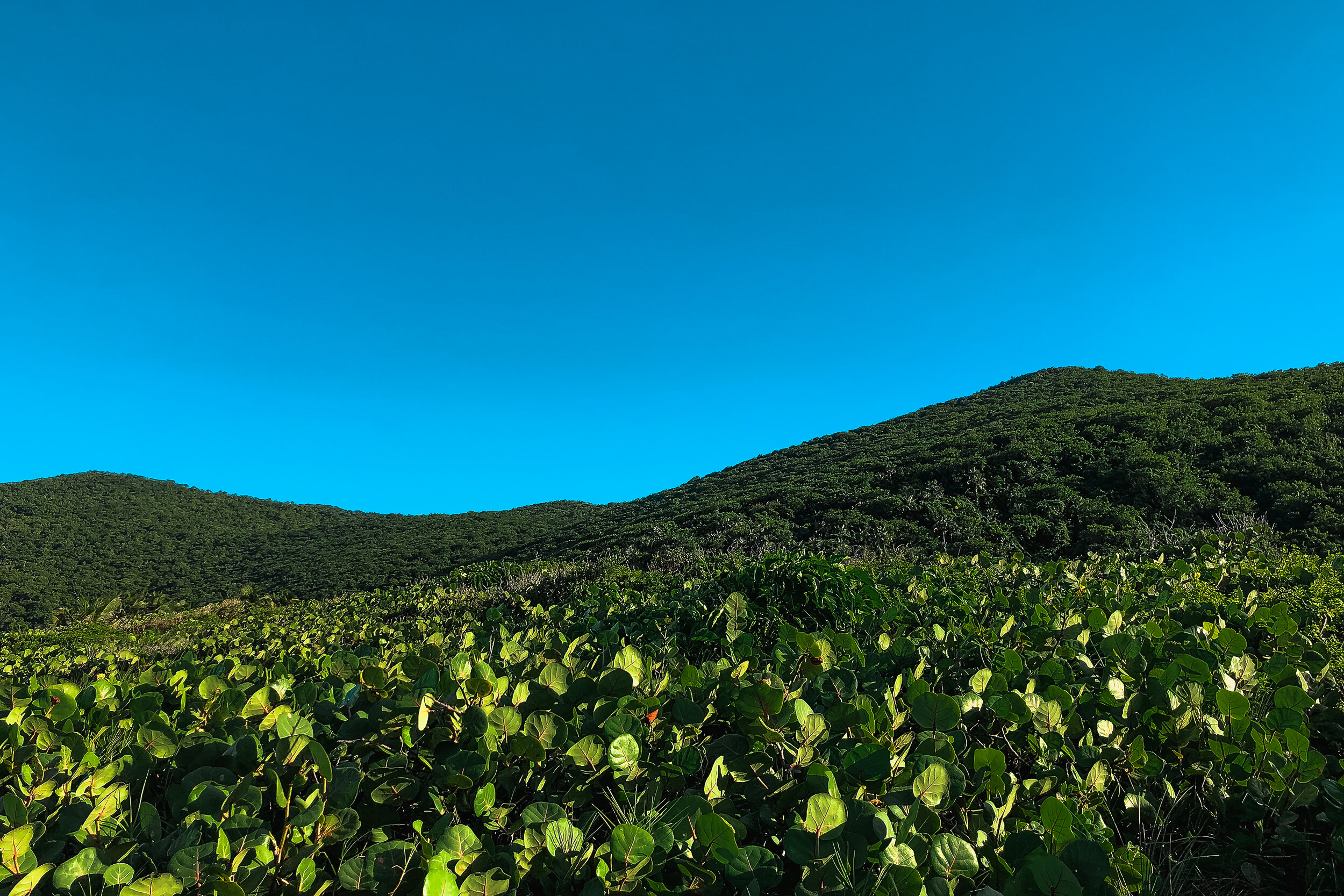
Playa Resaca. This beach is as much about the journey as it is the destination. After a rigorous hike, you’ll reach a vast beach that you’ll likely have to yourself the entire day. The only swimmable area is the shallows at the far east end of the beach. Because it’s so remote, it’s the perfect place to get naked ;)
Getting Here:
Follow a paved road up the hill past the airport. There will be a parking lot at the top. Walk through the waist high grass behind the sign to locate the trail.
The further you descend, the more rigorous the trail gets. You’ll have to walk over boulders and duck under tree branches. We recommend wearing pants, hiking shoes and bringing a stick to knock away spider webs and thorny plants.
The trail ends at a mangrove forest just before the beach. There will be pink and orange ribbons, nautical debris and water bottles strung along the trees guiding you through it. Follow these markers, even if you think you’re on the path, or you will get lost!
The final stretch leads through a thicket of beach grape trees ending at a lone palm tree overlooking the beach. From the parking lot, it should take you 45min to reach Playa Resaca. Plan to leave the beach at least 1 hour before sunset.
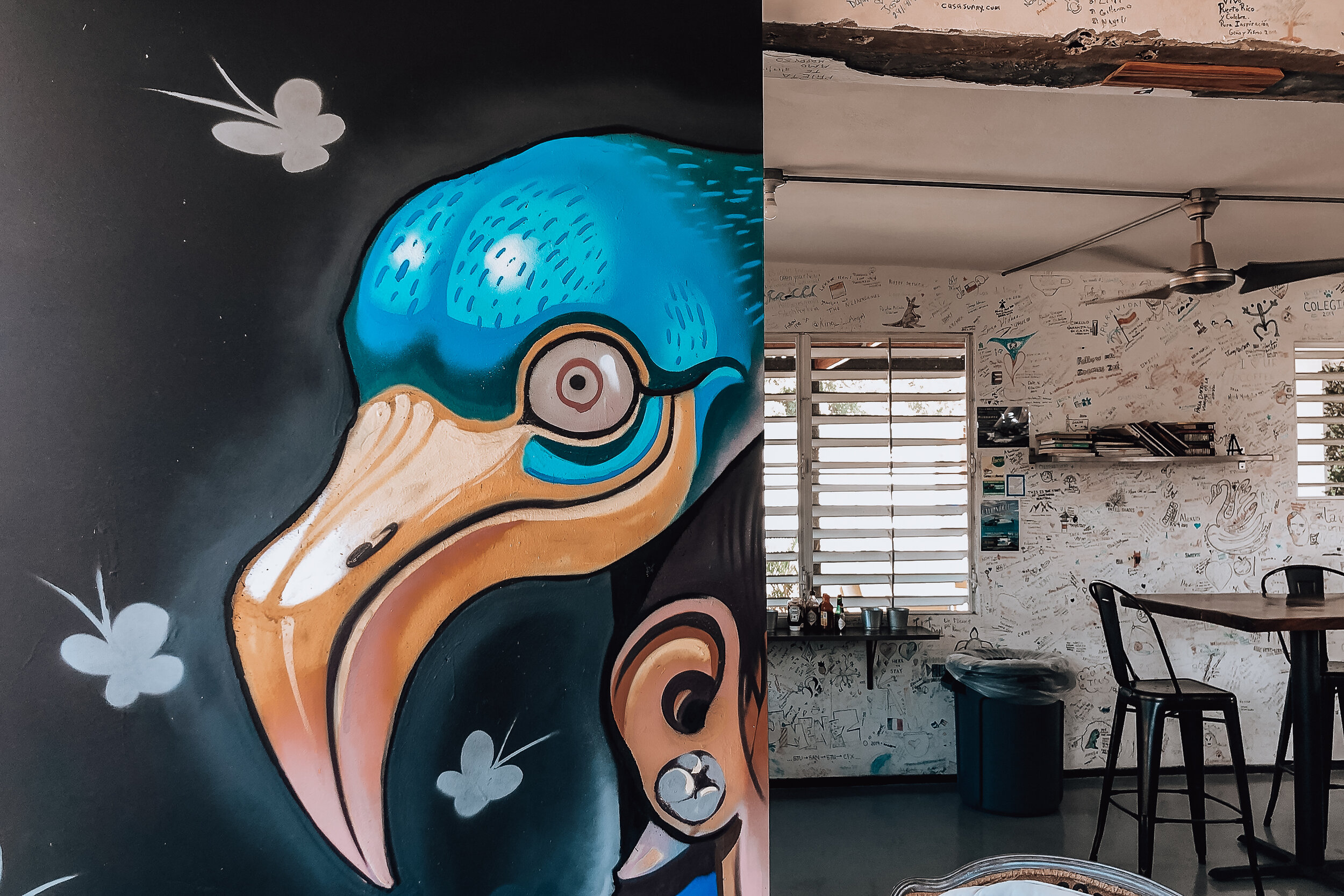
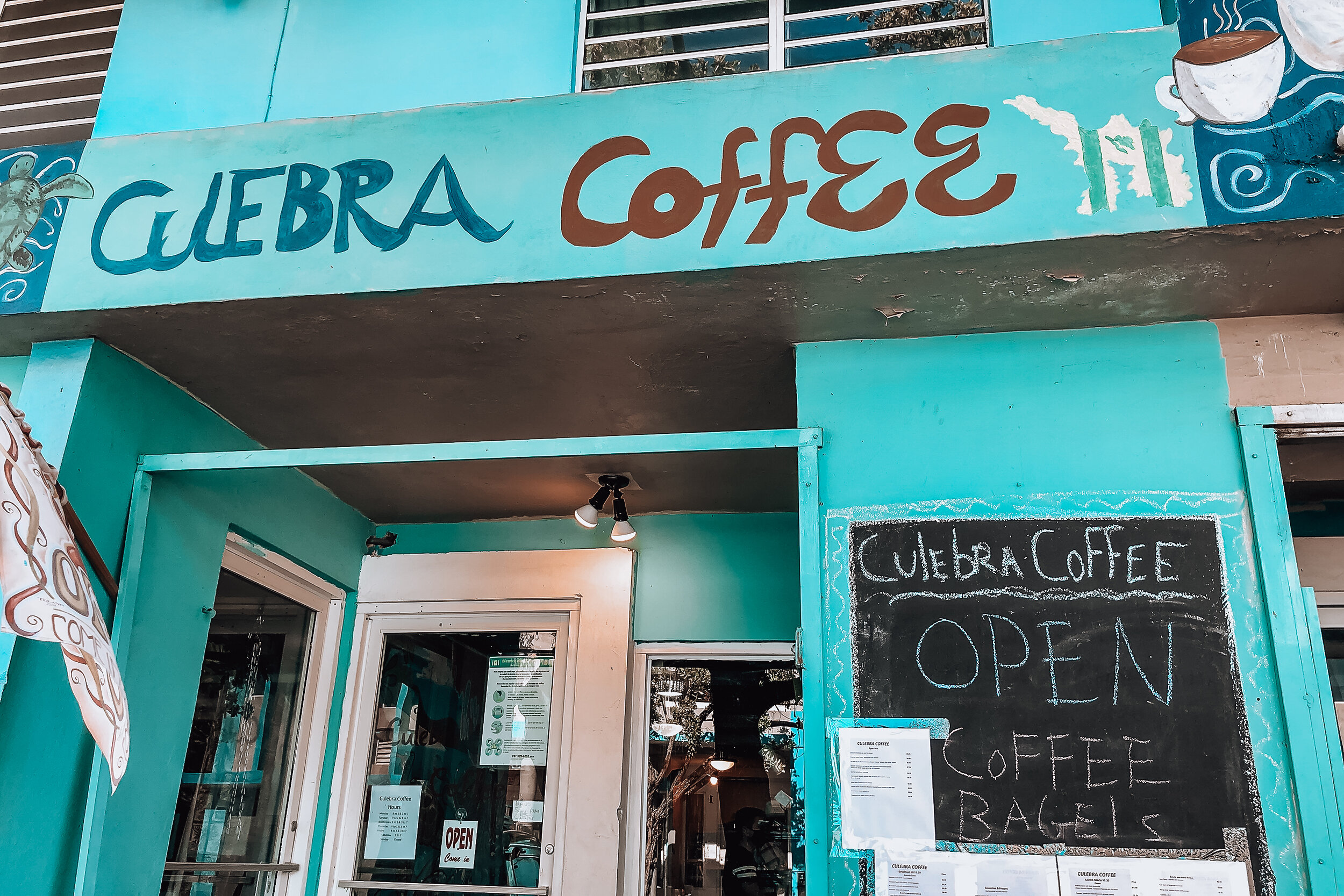
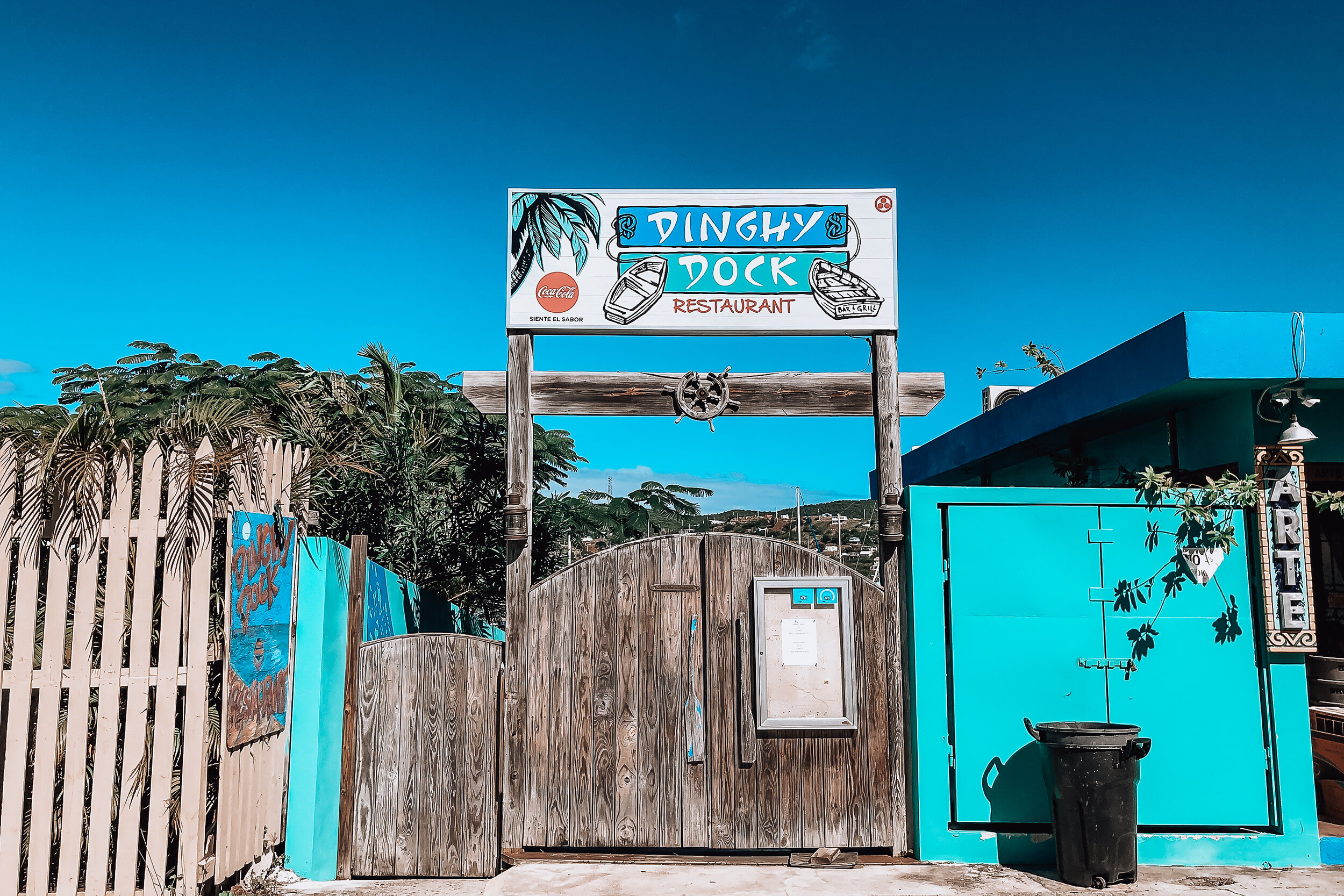

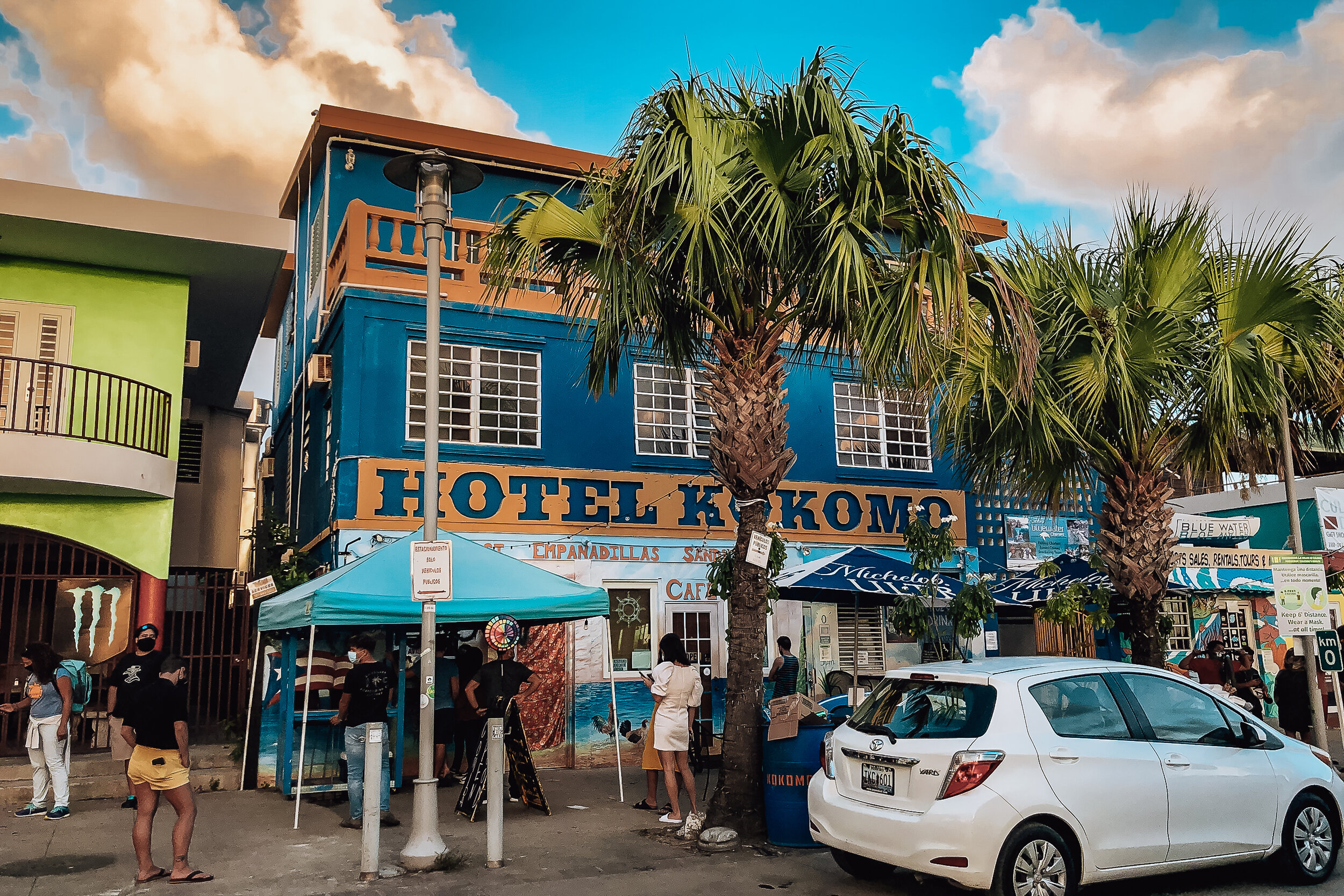
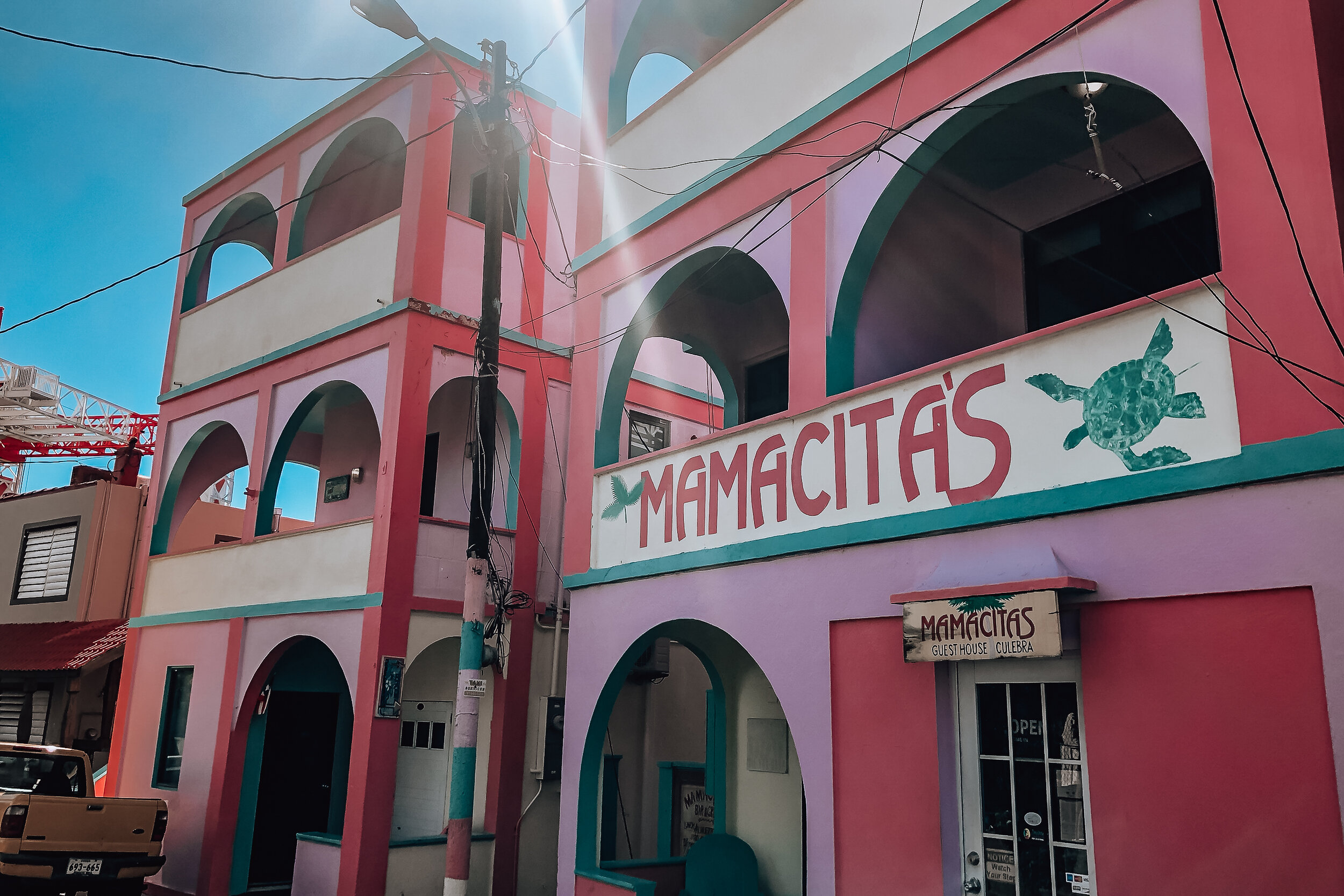
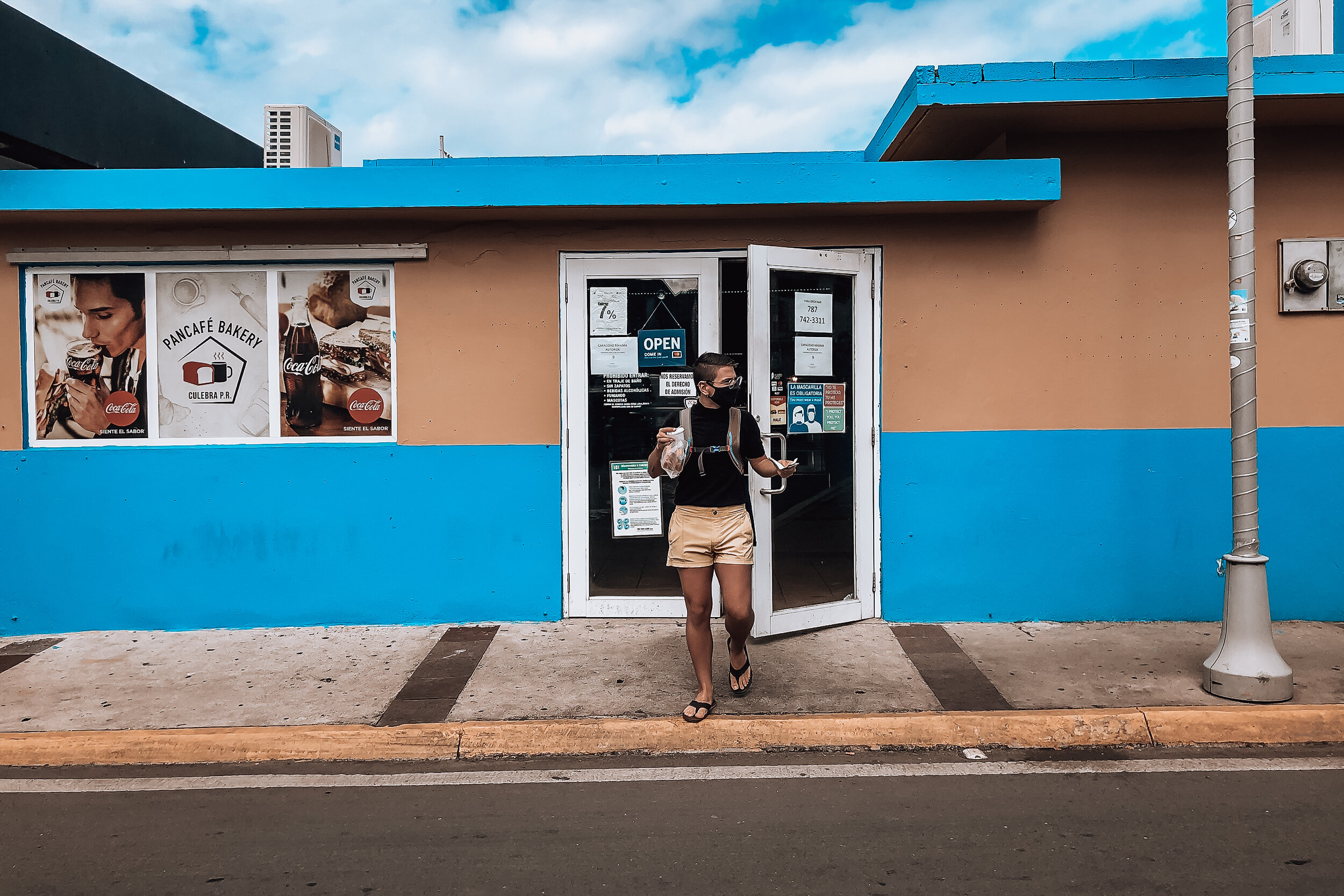
Restaurants
Black Flamingo Coffee. Our favorite breakfast spot on the island. Come here for their coffee, homemade sourdough toast and breakfast tacos.
Culebra Coffee. A coffee shop selling mango and acai bowls, egg dishes and baked goods.
Dinghy Dock. A lively place to eat directly on the water. It’s open late, serves classic Puerto Rican dishes and has great cocktails. Ask to feed the tarpon!
Mamacitas. A restaurant, bar and hotel along the canal. We’ve dined, drank and stayed here! It has a very social atmosphere.
Restaurant Carscoles. Easily the best seafood restaurant in town serving Caribbean lobster, whole fried fish, carrucho and more. Have the tres leches for dessert.
El Eden. A homestyle restaurant with a nautical interior and wine bar.
Hotel Kokomo. The perfect go-to for an inexpensive meal or quick lunch, especially while waiting for the ferry. We’ve ordered fish sandwiches and empanadas.
Pancafe Bakery. A nice spot to go for sweets, baked goods and morning coffee.
Lococina. Come for the drinks, harbor views and chill vibes.
Good to Know:
Most places accept credit cards however it’s good to have cash. There’s an ATM in town near the ferry terminal.
Make reservations at places you want to eat. Service ends early and places can book up.
Be patient, people and businesses move slower here.
Grocery Stores
There are two grocery stores on the island. Colmado Carniceria Milka, located in town and Colmado Costa del Sol, located next to the airport. Both offer all the basics and necessities of any grocery store. They’re also good spots to buy snacks and drinks for the beach.
For Next Time…
Rainforest Zipline Park. Located in El Yunque, this park offers zipline tours through the rainforest’s lush canopy.
Las Paylas Waterfall. Nearby El Yunque and on private property is a natural river rock slide. An older gentleman who owns the property charges $5 admission. There are no official hours so you have to chance it if visiting. We tried but were turned away.
Visit The Icacos Islands. The Icacos are a key of many small islands with diverse sea-life, species of birds, coral reefs, beaches and marine activities. We booked a tour previously but it was canceled due to high winds.
Fly to Culebra & Camp at Flamenco Beach. We want to experience flying into Culebra. To offset the cost, we’re planning to camp at Flamenco Beach.
Visit Isla Culebrita. An island and nature reserve across from Zoni Beach. It has 6 beaches, tide pools, coral reefs, sea turtles and the ruins of an old light house.
Vieques. Spend a week exploring Puerto Rico’s other major island to see the bio-bays and black sand beach.




